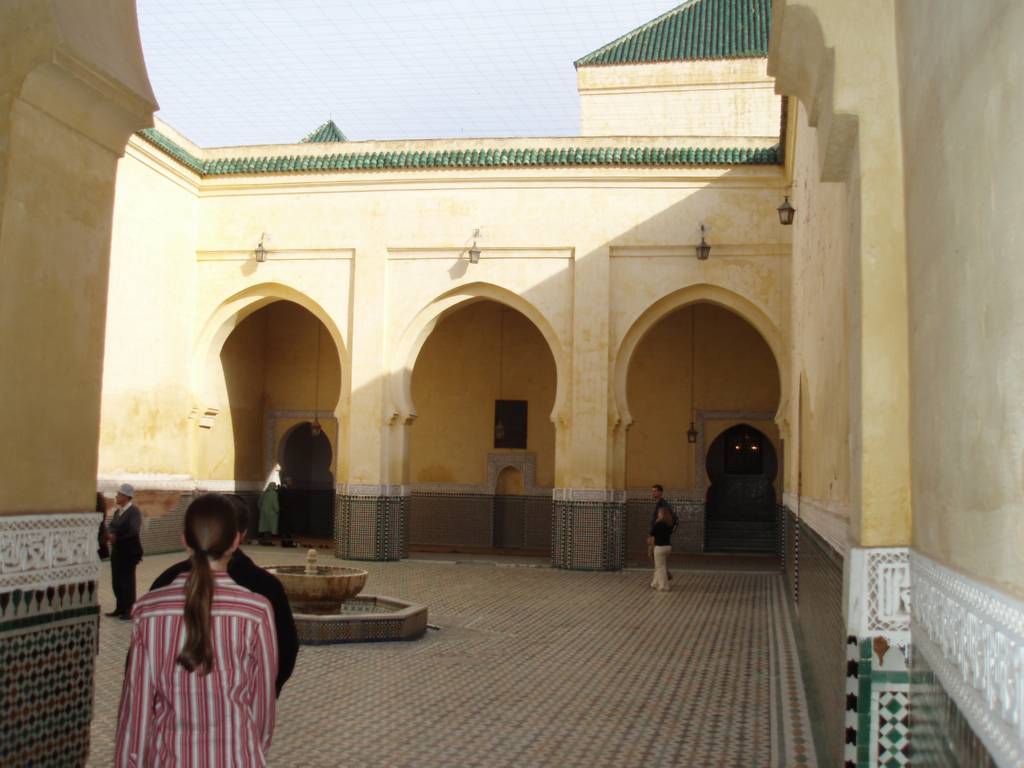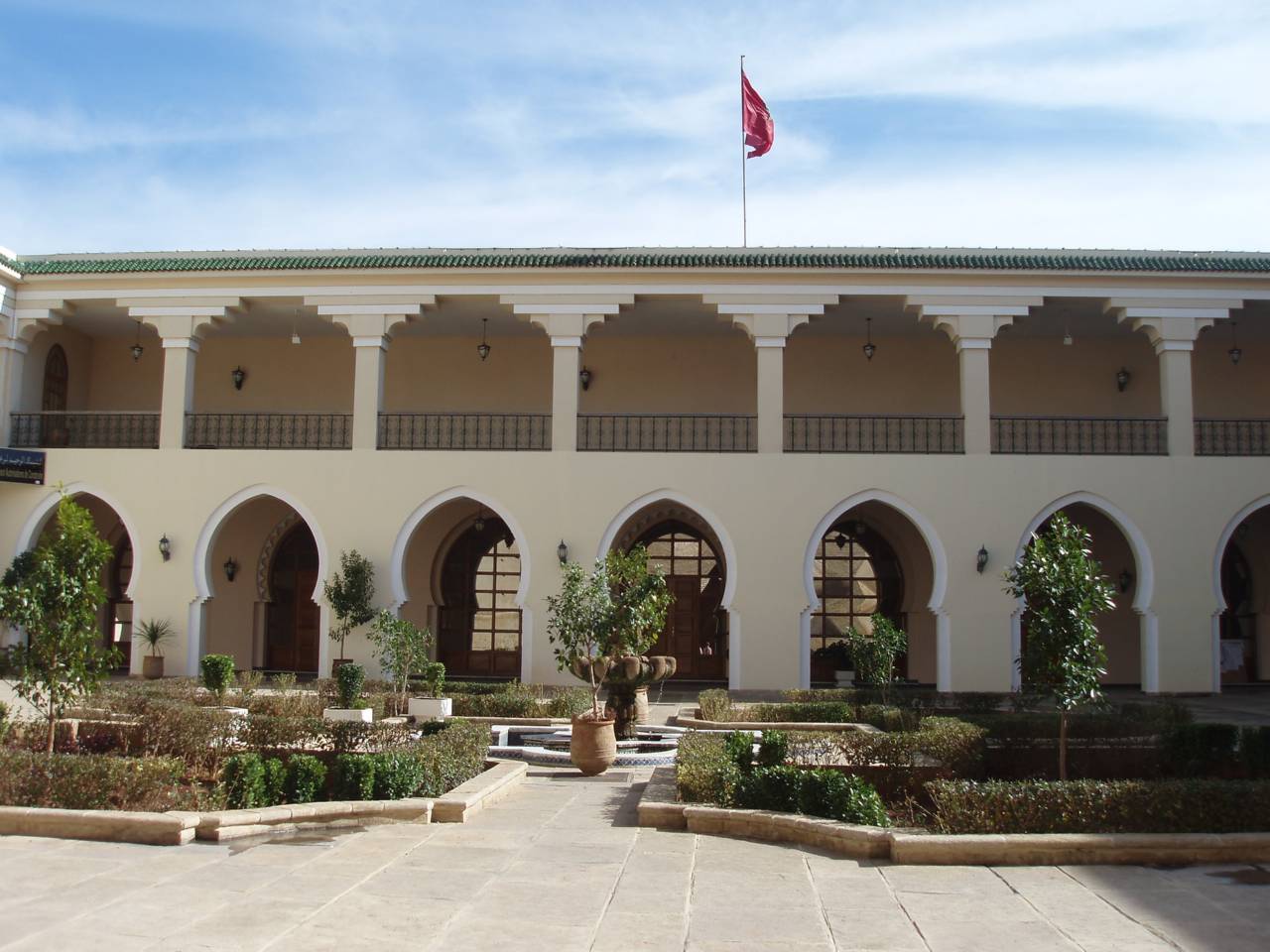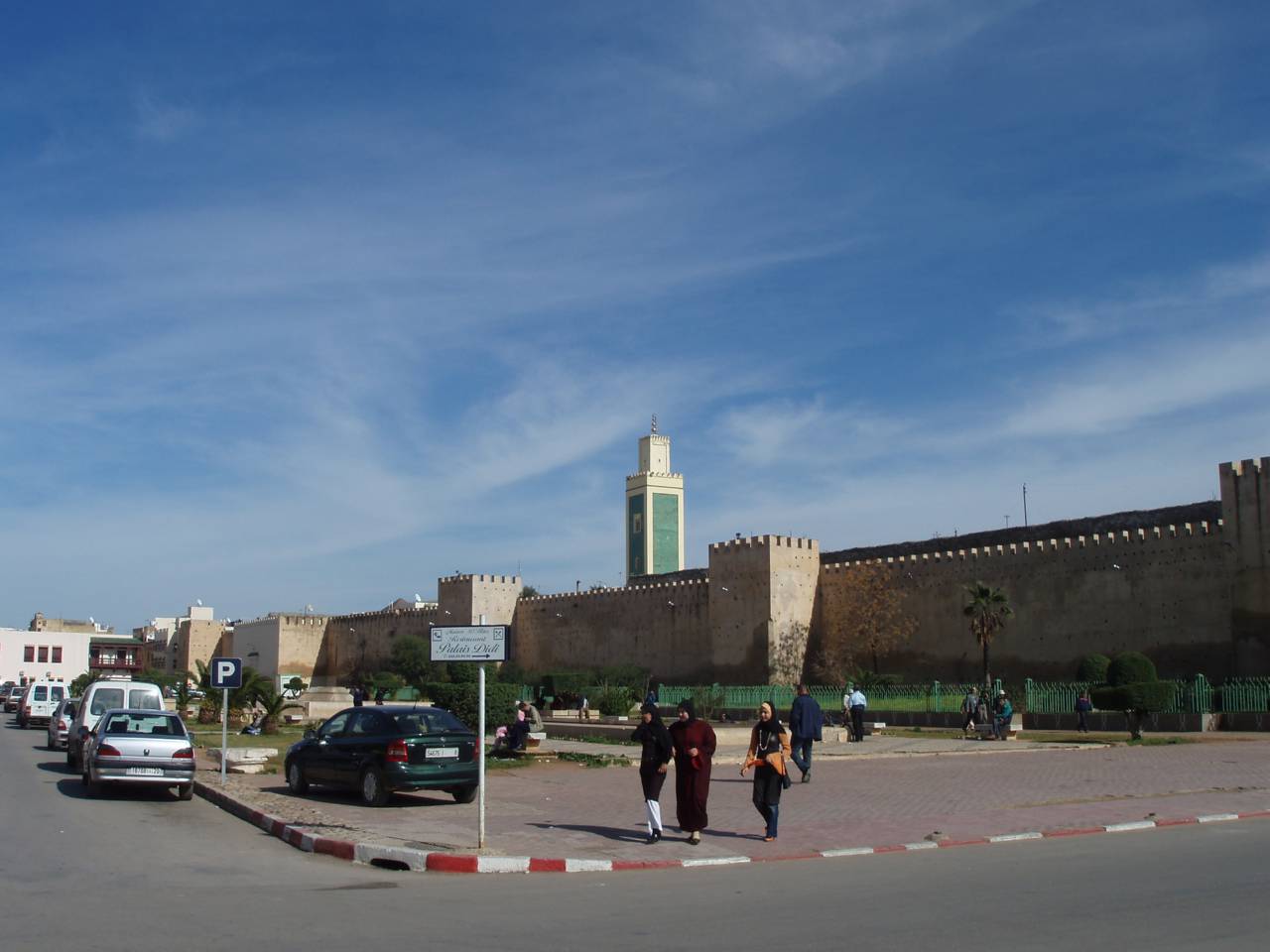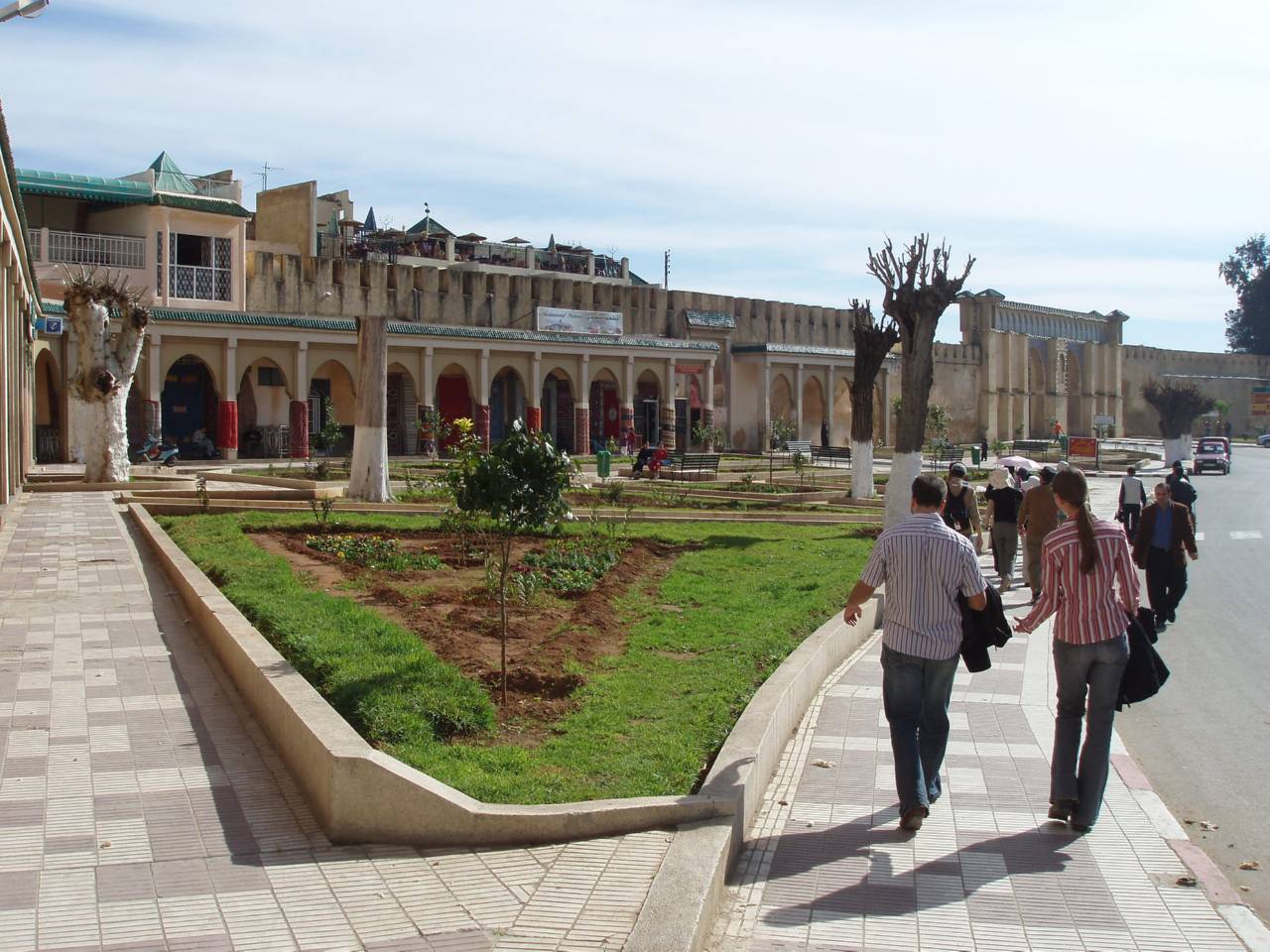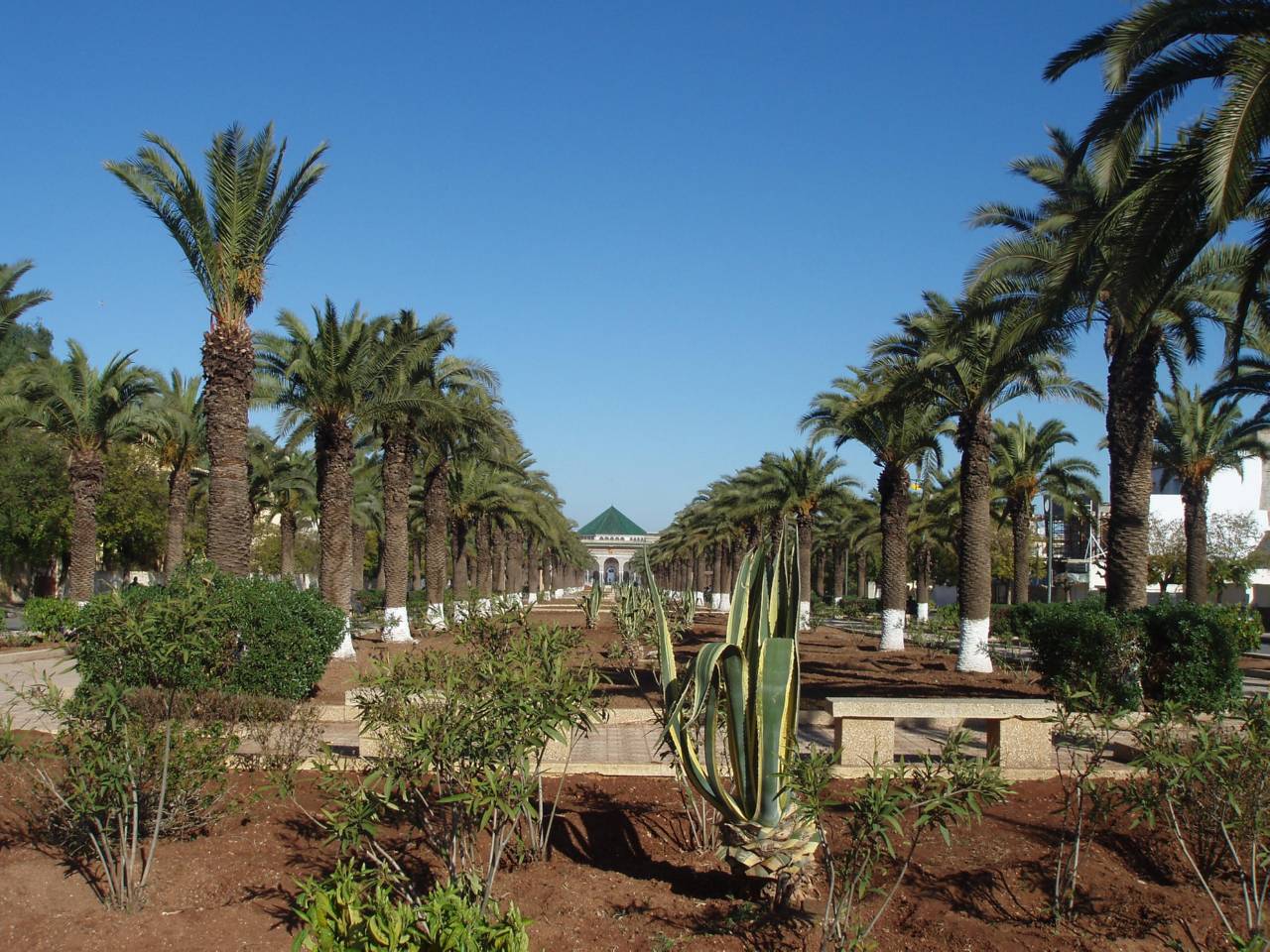Diary Entry
We reach Meknes in the evening around 10:30 p.m. The train from Tangier arrives in the city on time. The streets are quiet and deserted and the train station is out of town, but Meknes is not big. We’re thinking about what to do now. It is important to find a hotel, and as soon as possible. At the exit of the train station, some people jumped out of nowhere and offered us “good” hotels.
A small man assures us that he knows a hotel nearby. Since at least we don’t have to take a taxi and the guy doesn’t look all that cunning, I’ll follow him. In fact, he leads us around the next corner to the fine hotel “Majestique“. In the country, the tourist business seems to run on commissions, because the little man does not want any money from us, but runs straight to the porter, who, however, throws him upright again out of the building.
The hotel is really fine, so I’m cautious about asking the prices. Especially since it’s getting late. We were offered a triple room with a shower for about €12/person and a triple room with a shower in the hallway for about €10/person – both rates including breakfast.
We were told that at this time out of season you would pay even less. But given that it’s late, the hotel looks cozy and the price including breakfast isn’t too bad, we say yes.
Although it is the most expensive, it is really the best hotel that we will have on the trip. The room is comfortable and everything is clean. The hotel is decorated in a mixture of French mansion and Arabian style.
We go out into the street again as our Finnish friend is hungry. There are few opportunities to buy food. As soon as we entered the street, the first children climbed onto us, wanting to beg for some money.
Olli enters what looks like a kebab shop, but the owners look at him in surprise as he tries to tell them he’d like something to eat. In the end he bets on a baguette as well as cheese and meat and salad, whereupon one guy cuts some of the cheese into pieces and puts it on the bread while he looks questioningly at Olli. We save ourselves further attempts at explanations and Olli gives the roll enough for the first hunger, even if he realizes too late that the equivalent of 6 € was a much too exaggerated price.
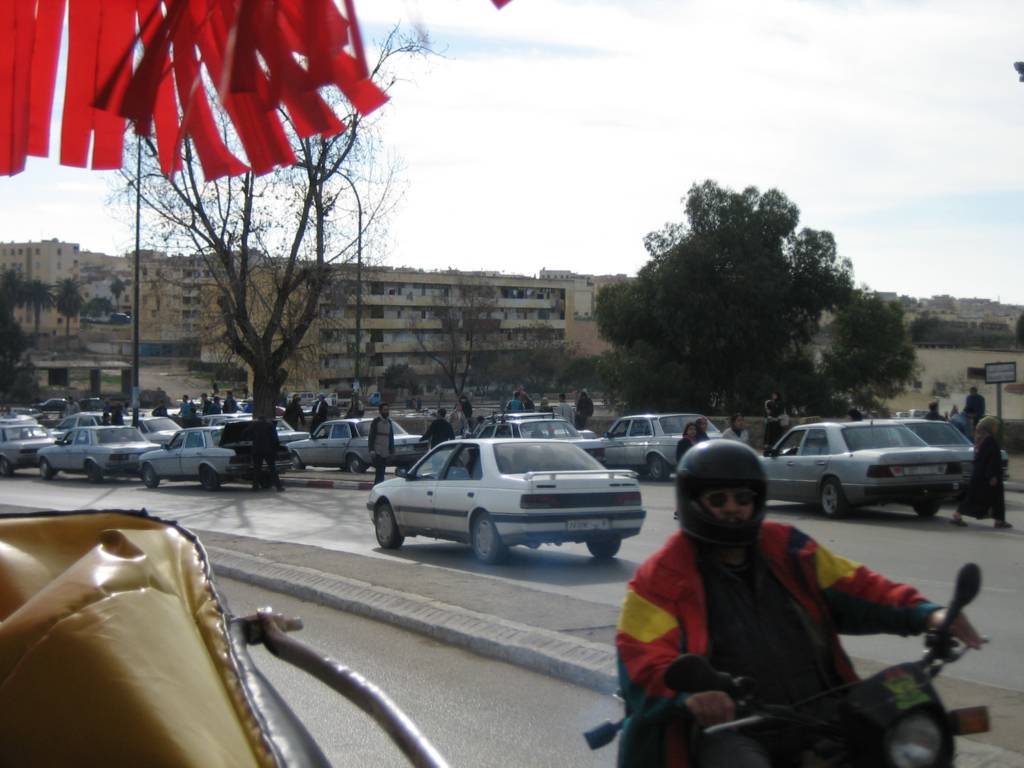
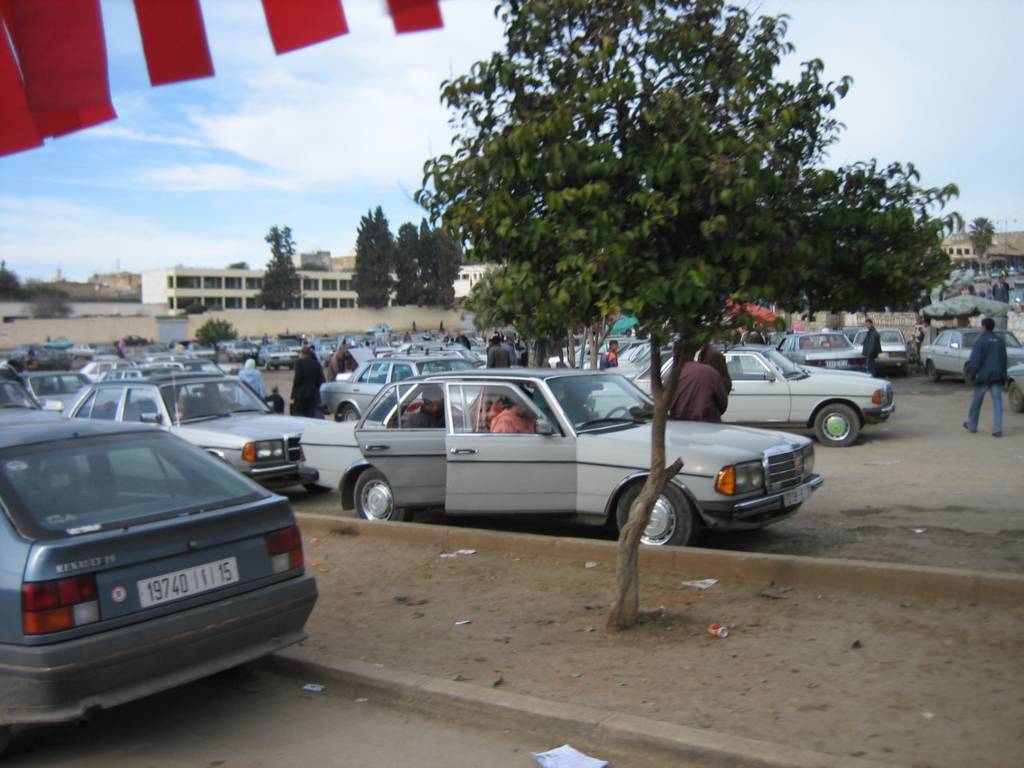
The alarm clock throws us out of bed at 8:30 am… since Olli snores like a Finnish lumberjack, it’s not the first time my eyes are open in front of the alarm clock.
Departure to the city
Conveniently, there is breakfast in the hotel, so after getting up we go to the small dining room. A different hotel porter than yesterday greets us a bit too friendly. We find our table and immediately a woman comes over who puts butter, jam and the typical Moroccan semolina bread in front of us. Coffee follows right after. The dining room is furnished like an Arabic tea room, except that there are actual tables and chairs.
After breakfast I ask the porter for a map of Meknes. The man only speaks Spanish instead of English, which is just as good for us since we live in Spain at the moment.
Armed with the city map, we now dare to explore the Moroccan world for the first time and set course towards the city centre.
On the way, someone suddenly calls after us. When I turned around, I recognized the porter from yesterday, only this time without a suit and tie. He greets us very friendly and tells us that he finally has a day off to sleep. He gives us a few tips for the city and says goodbye again with a yawn and a wave.
Here in Meknes, too, Moroccan traffic isn’t as bad as expected – there aren’t many cars at all; but many donkey carts that help determine the city traffic in Morocco. But the cars that exist are old Mercedes!

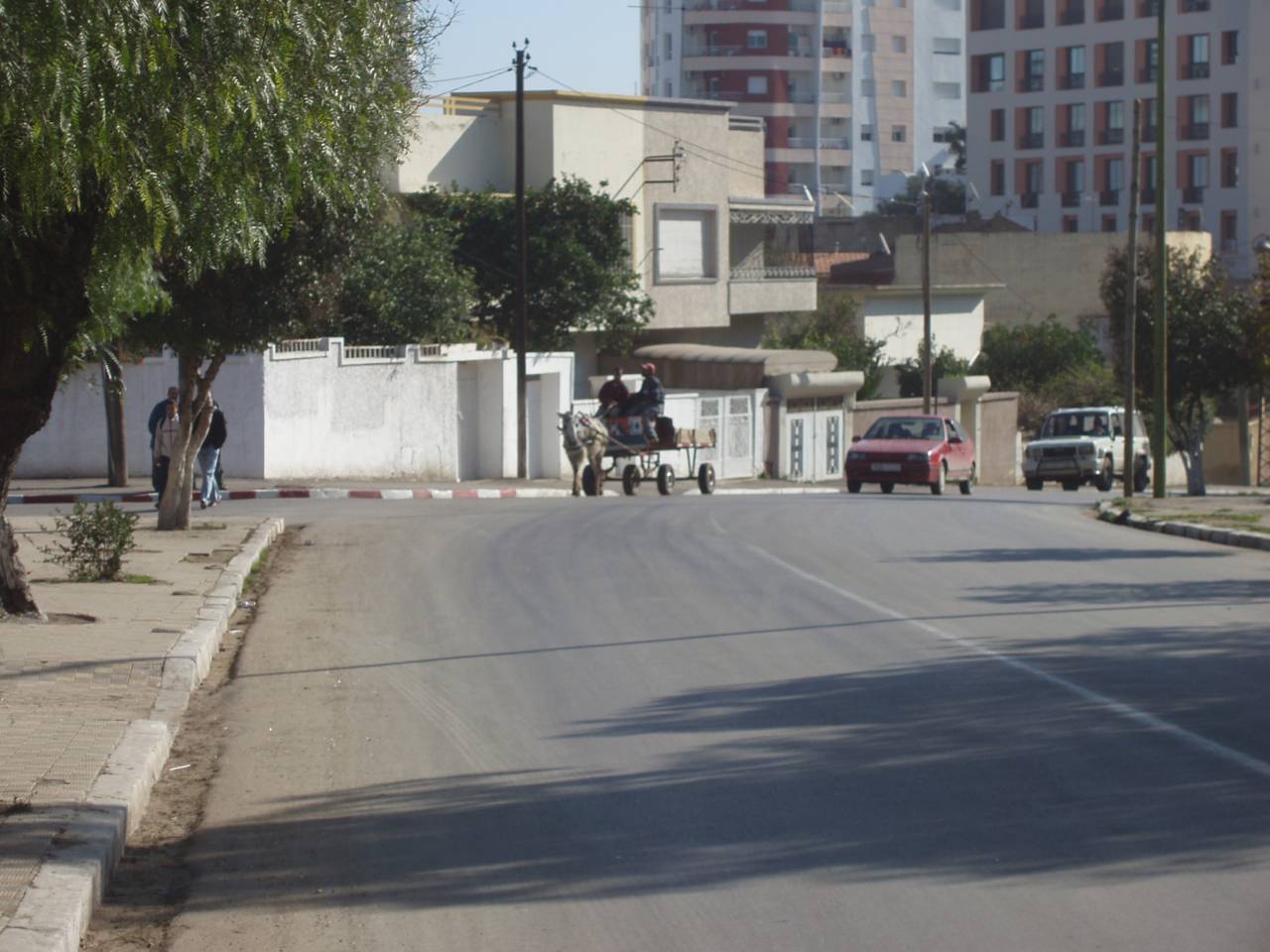
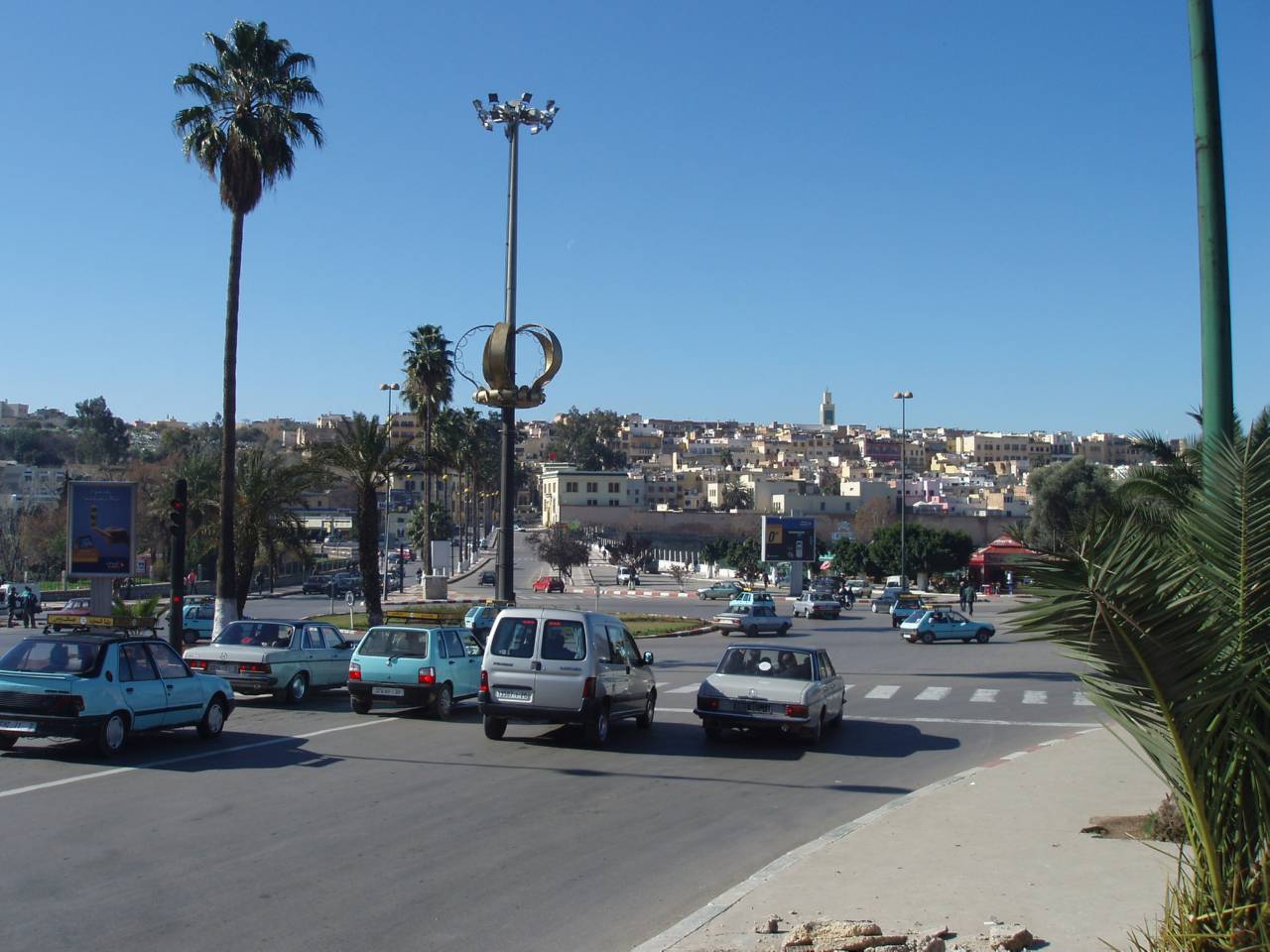
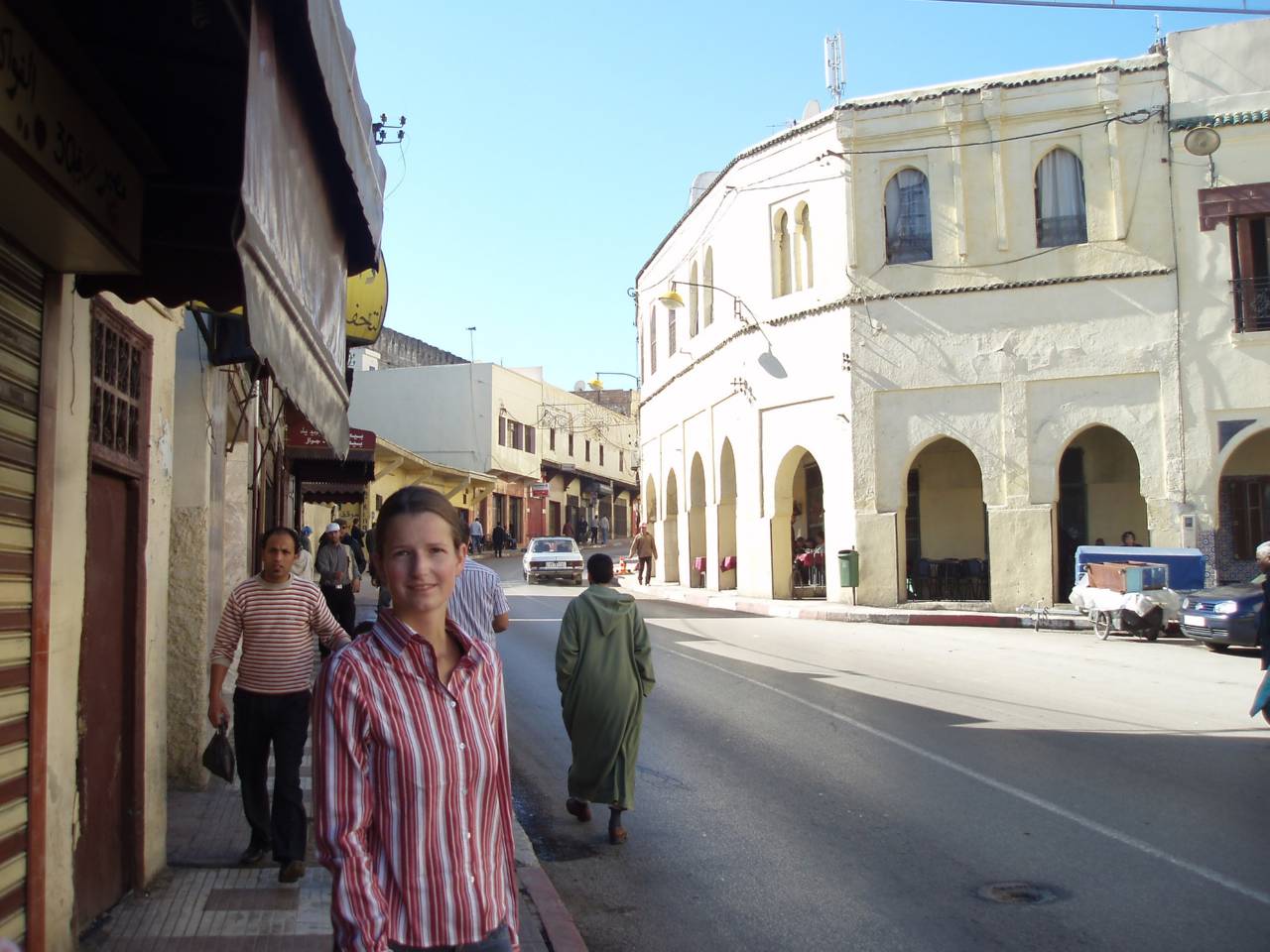
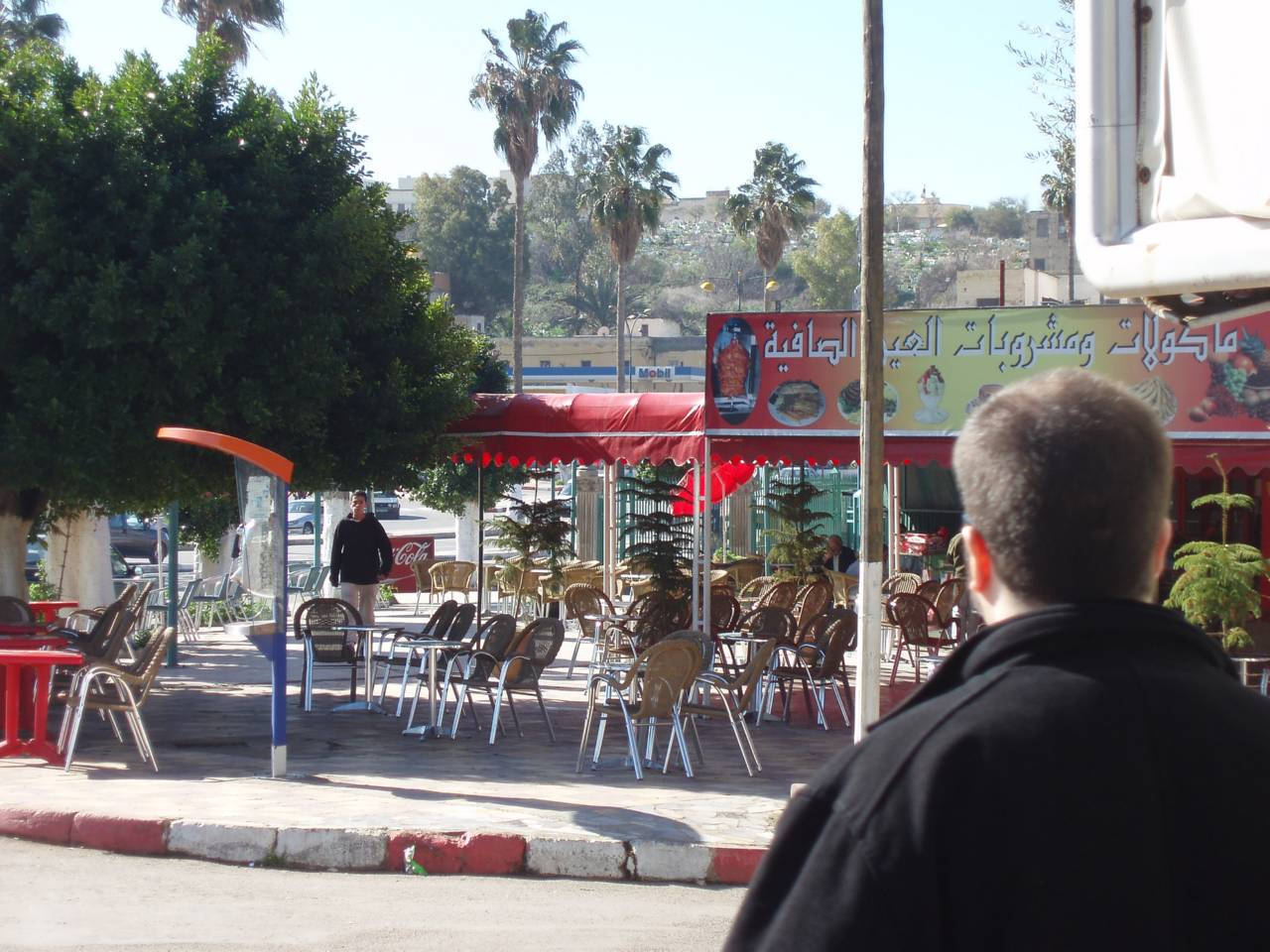

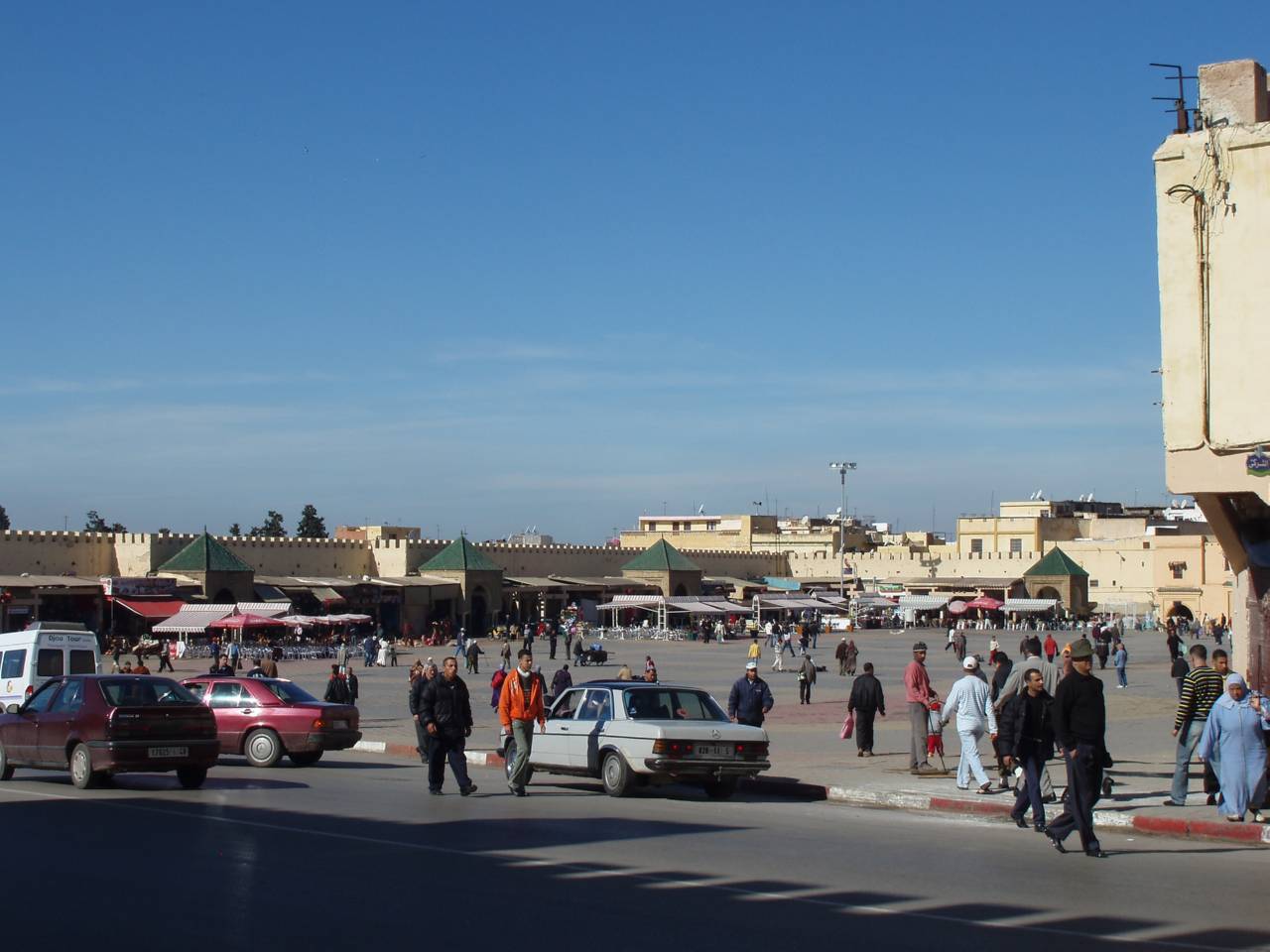

From a vantage point we have a good overview of the city. We see the minarets of the mosques, the roofs of the houses of the new part of the city where we are still and the labyrinth of the medina, the old town. We now head in this direction full of adventure and after a few bends we reach the Bab Mansour, the Great Gate, and the large square of Meknés. This is framed by an old city wall, the medina and the market, the soukh.
The market
Storytellers gather crowds of people in the square and tea shops lure with tables in front of their shops. We march through the hustle and throw ourselves onto the market. Everything you can imagine is commercially available here, from cheap items from Asia to “branded” leather jackets, drugstore items, hi-fi systems and all kinds of groceries.
We reach a market hall where chickens and rabbits are sold at stalls. Immediately behind are stalls where the same animals are offered in slaughtered form. Nobody here has heard of cooling raw meat and swarms of insects find a feast here.
After the strongly smelling slaughterhouse stalls, stalls selling olives in all shapes and colors follow, which are painstakingly and artfully piled up. Finally, we find ourselves in front of stalls full of puff pastry, honey and caramel particles, as well as pralines and other sweets of all kinds.
Here, too, the insects are buzzing, but here it is swarms of bees that are stealing the icing on the baked goods. We are offered the pastries to try – they are extremely tasty. In view of the onset of heat outside, however, the sugar weighs heavily on our stomachs.
In the next aisle, traders invite us to their fragrant spice stalls, where they guide us through the variety of spices from the Orient. Of food spices, such as various types of curry, paprika, ginger, chili and saffron, we also find fragrant varieties of rose stones and amber, which is extracted from whale bile.
I HAVE THE IMPRESSION OF BEING IN THE MIDDLE AGES
As we leave the hall we pass through small alleys where people sell potatoes and other vegetables, as well as very sick looking animals, tied or in cages, and fish and meat. The ground is muddy and it smells awful here again. The hustle and bustle looks like something out of the Middle Ages: people enter the streets from their makeshift dwellings. Women sit on the floor and prepare flatbread. Donkeys stand absent-mindedly in the middle of the path. Cats calculatingly stealing a fish from a merchant’s small stock. The men who walk the streets in kaftans and a cap or fez. The wooden stalls, the mud houses and the cobblestone streets. And finally, in every alleyway, a new explosion of seductive or emetic smells catches us.
A NEW EXPLOSION OF SEDUCTIVE OR NEGATIVE SMELLS CATCHES US IN EVERY ALLEY.
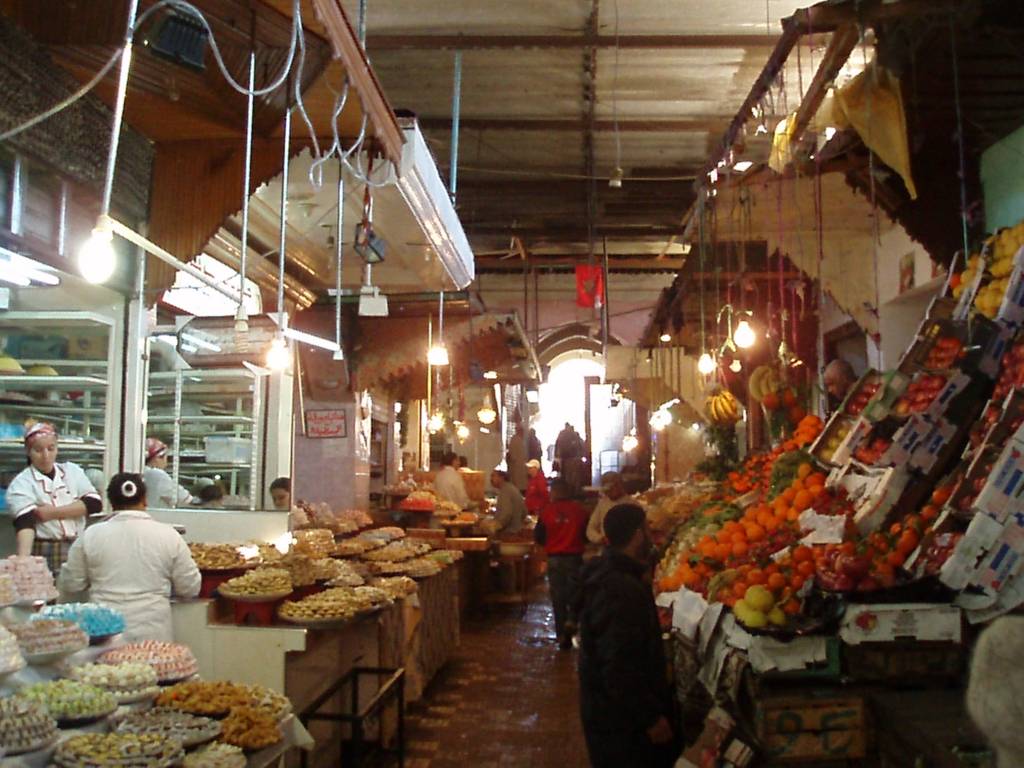
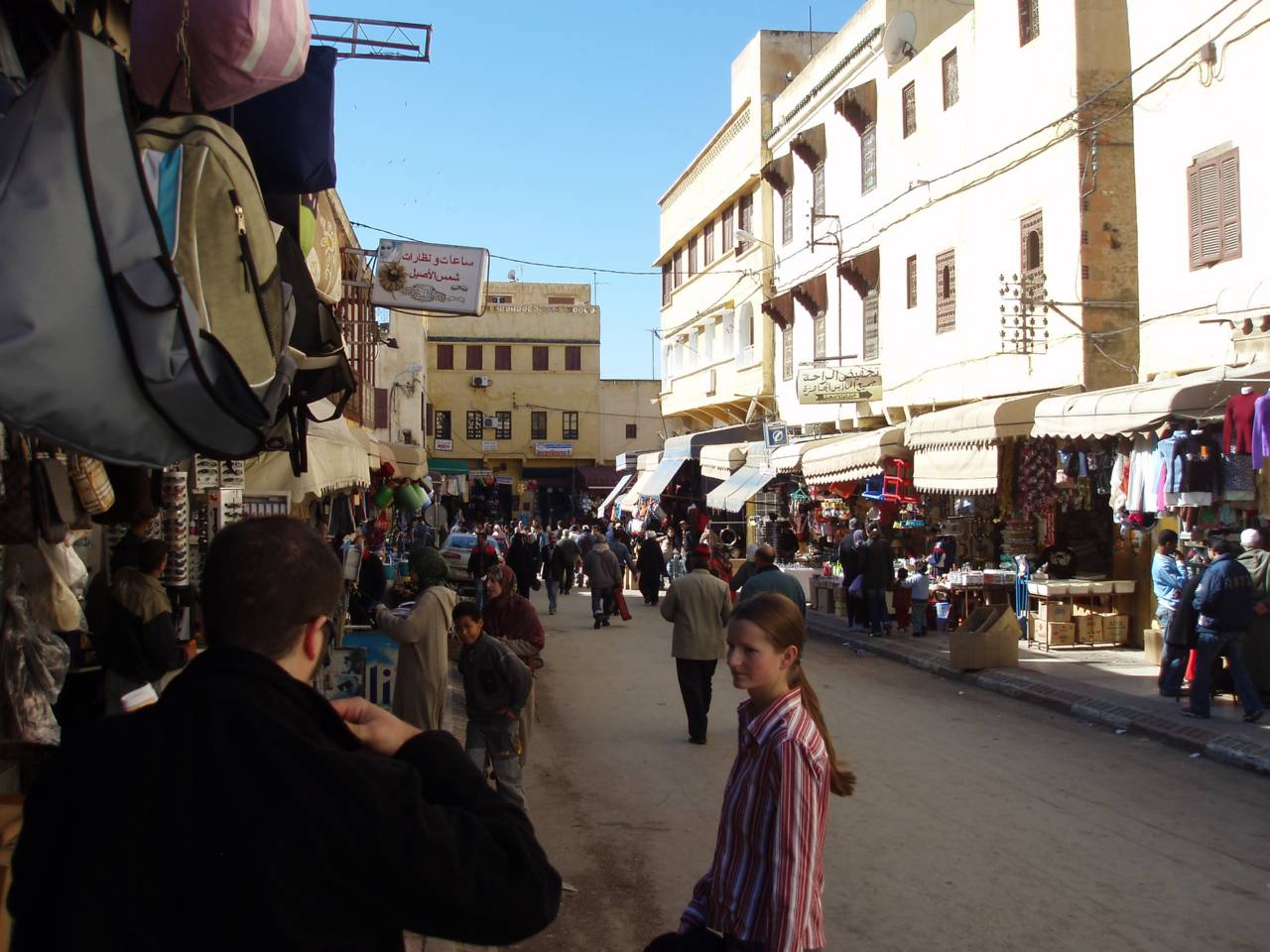
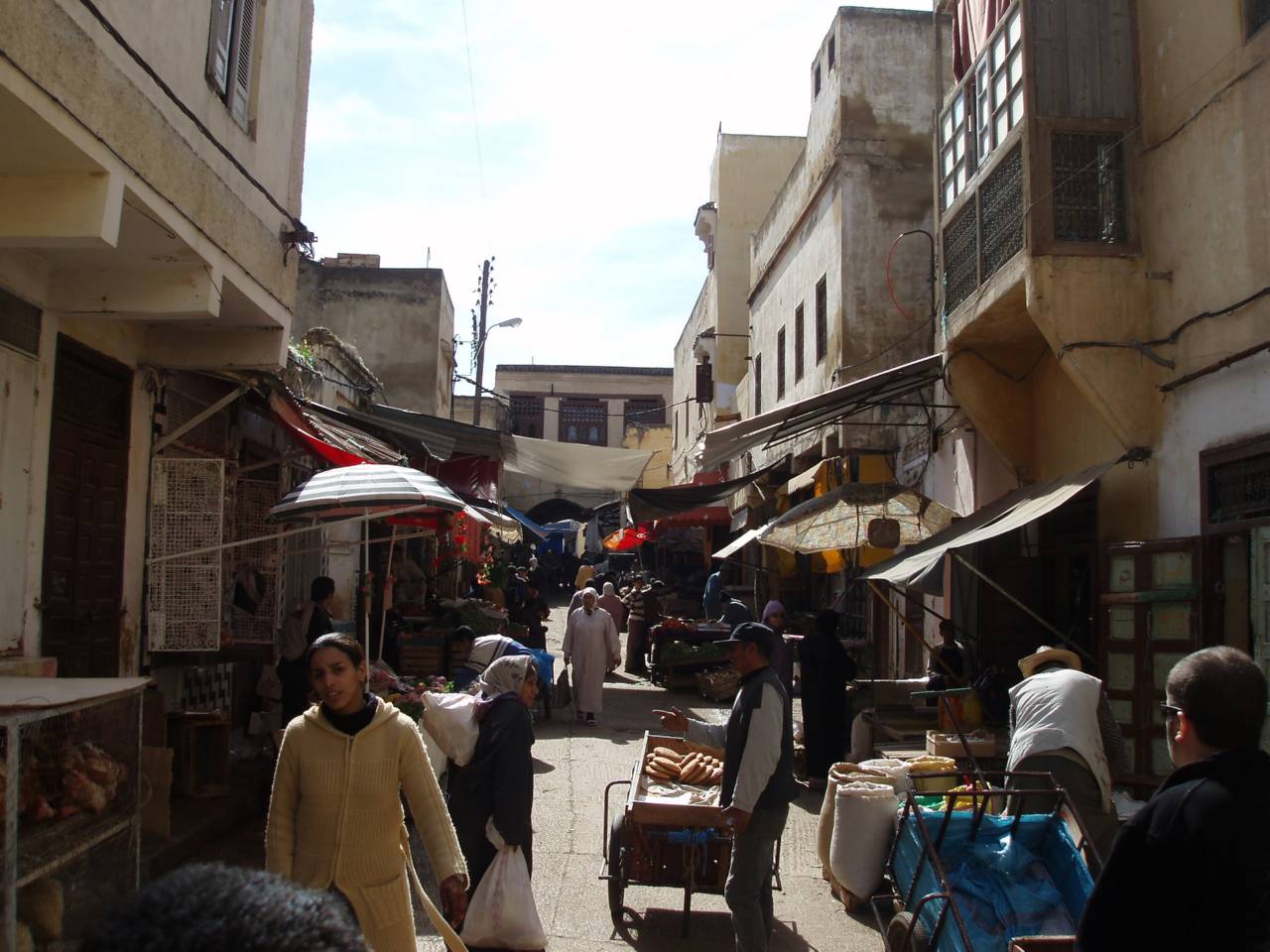
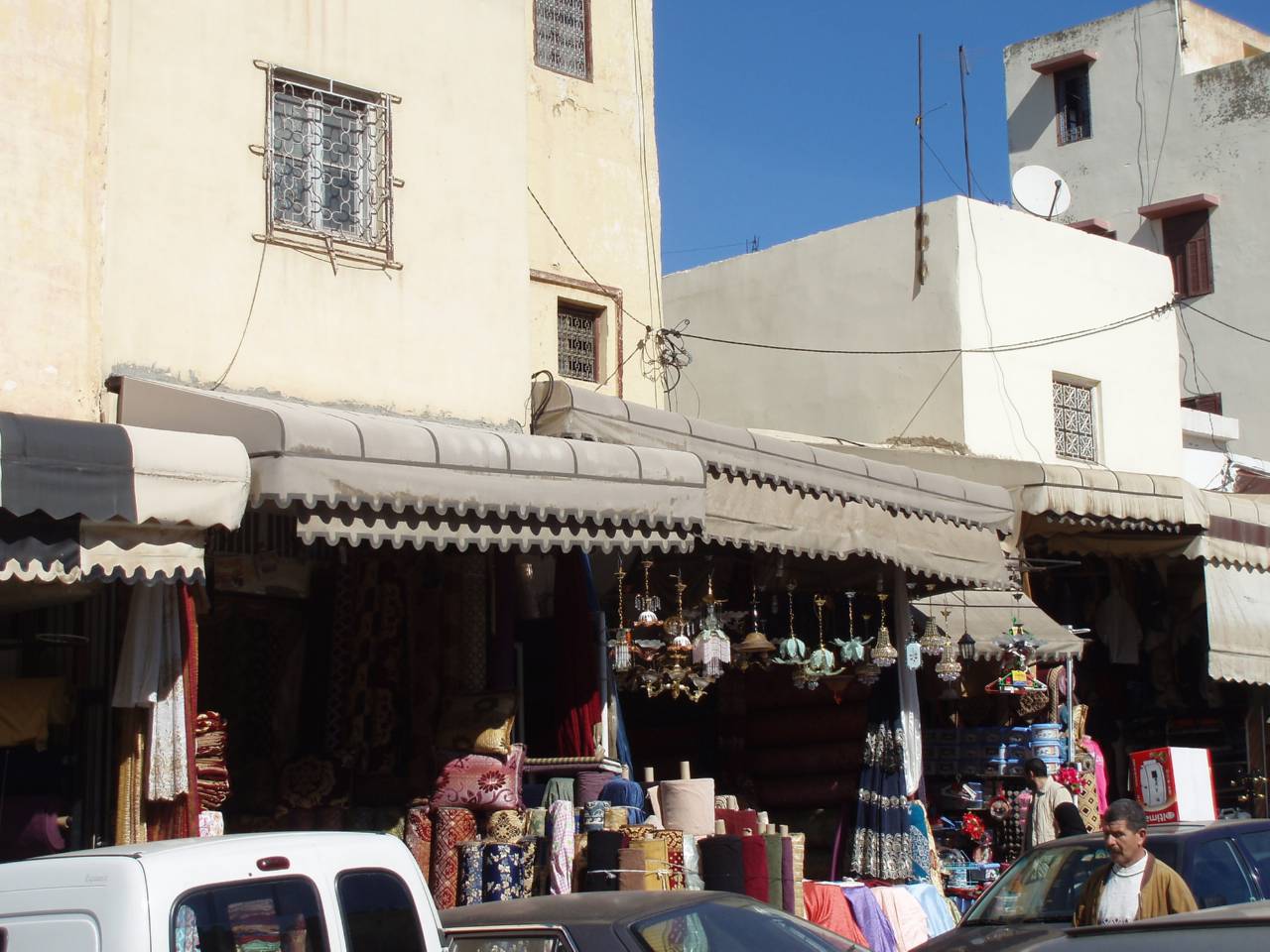

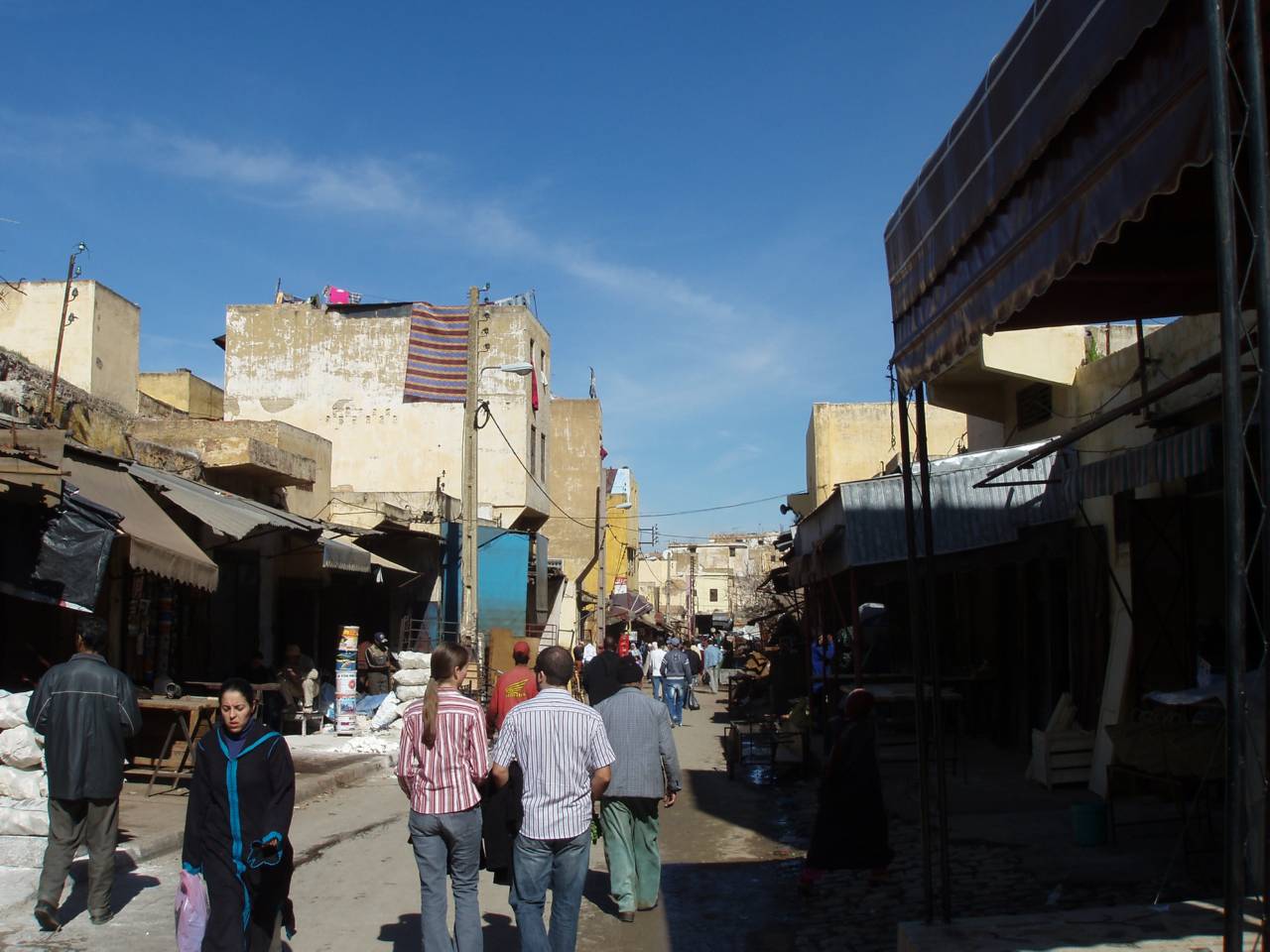

Then we reach quarters of the medina, which, like in the Middle Ages, seem to be dominated by the various guilds of artisans. We stroll through the carpet dealers’ quarter, then through the carpenters’ quarter and finally the quarter of metalsmiths. An elderly man invites us to his shop for tea and shows us his art. He speaks German quite well and, to Ollis’ surprise, even has a few sentences in Finnish in store. You have to have respect for the language diversity of the craftsman, because he really has something ready for every tourist in his mother tongue. He reveals to us that he can say a few things himself in Japanese.
The silversmith
The man showed us around his shop and workshop showing us trophies, plates and most importantly jewelry. The “Hand of Fatima“, Mohammed’s daughter, is particularly popular, which, according to legend, is said to have a protective effect against the evil eye.
He also took us up to his attic, where his journeymen are busy processing raw steel parts, shaping them and hammering silver through wires onto the objects in every imaginable beautiful pattern. The city is all about silver. It is mined locally and has been made into jewelry and ornaments here for hundreds of years.
After another cup of tea, the man then comes to business. Since we like some things, I buy a ring and Susanne a bracelet. I try my hand at trading for the first time and the dealer joins in with amusement. I’m not practiced yet though, so we’re already meeting at 60% of the price, which is still €5. When I ask if I’ve already acted well, the man just laughs and shakes his head. At least I’ve learned something.
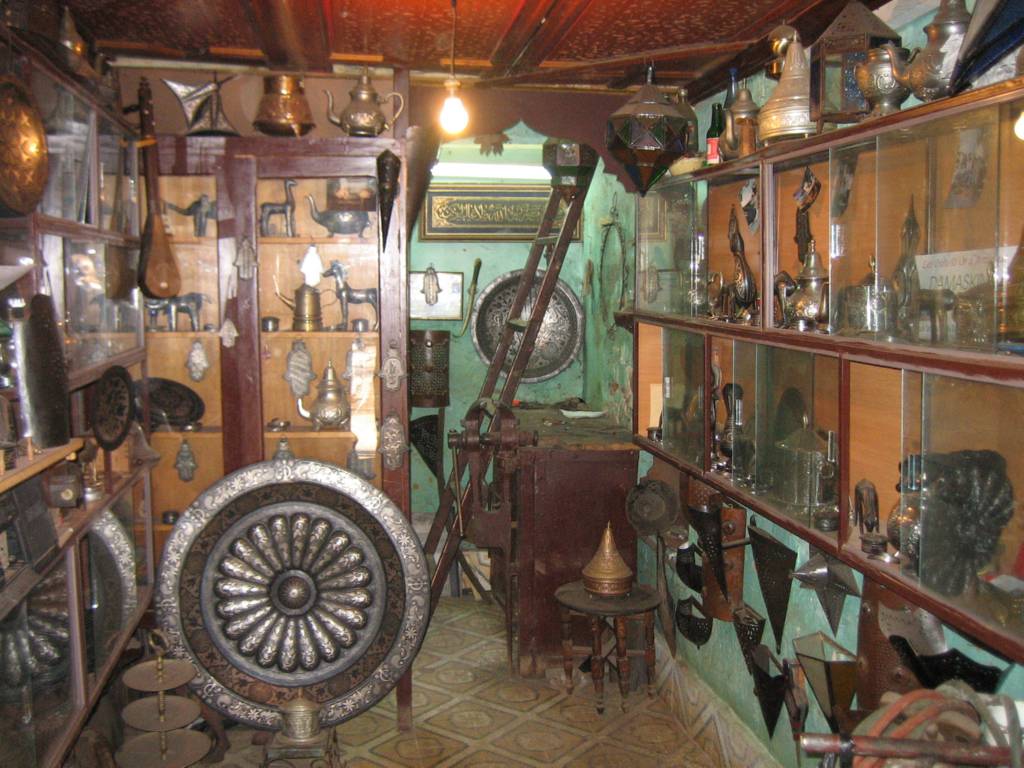
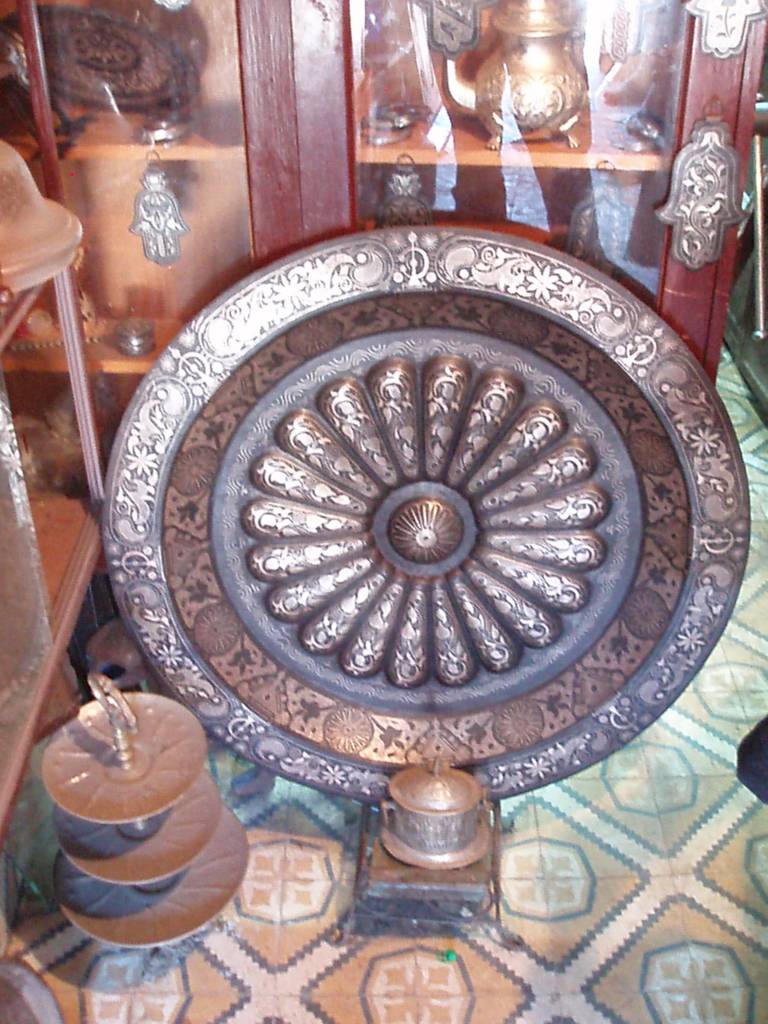
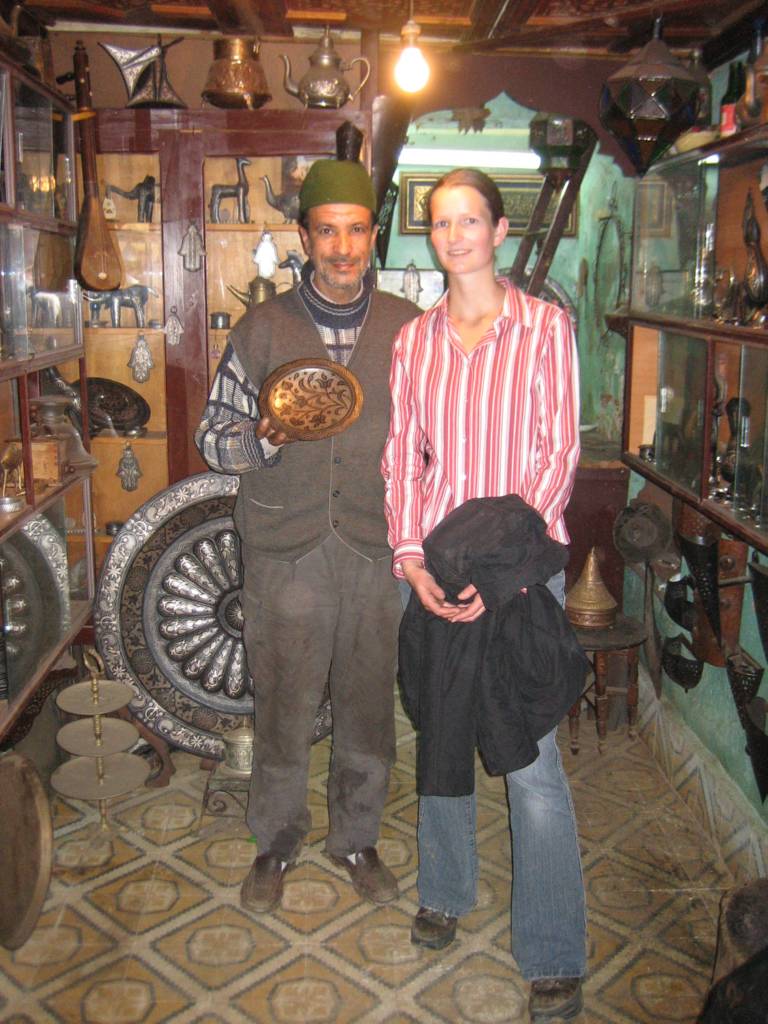
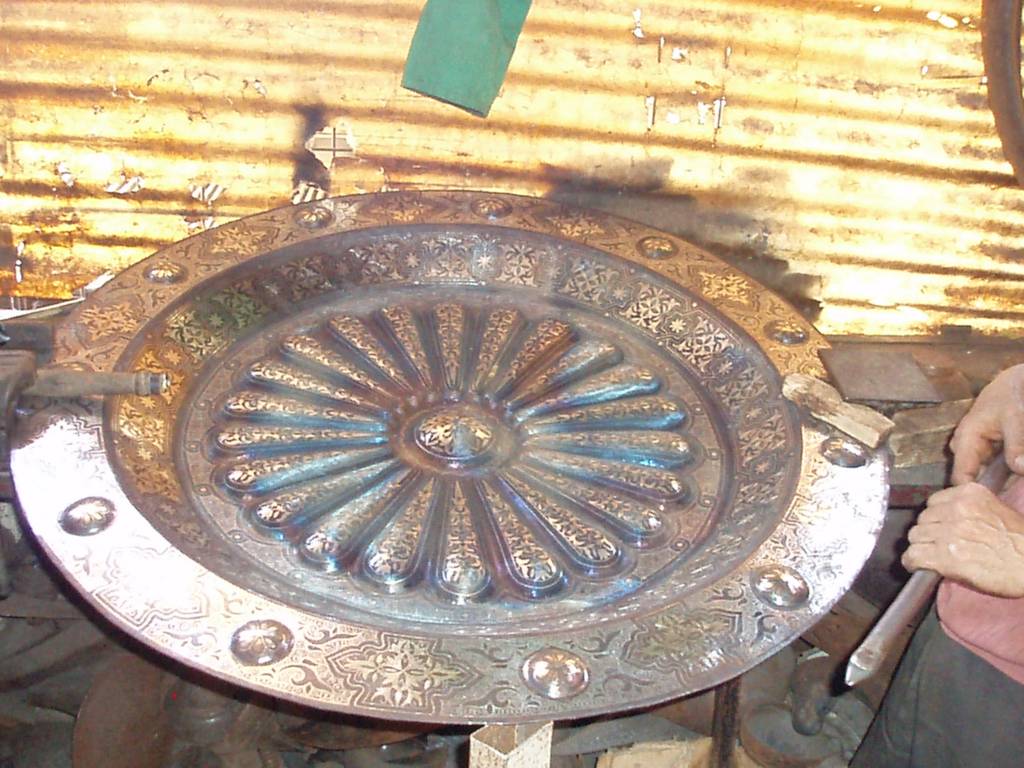
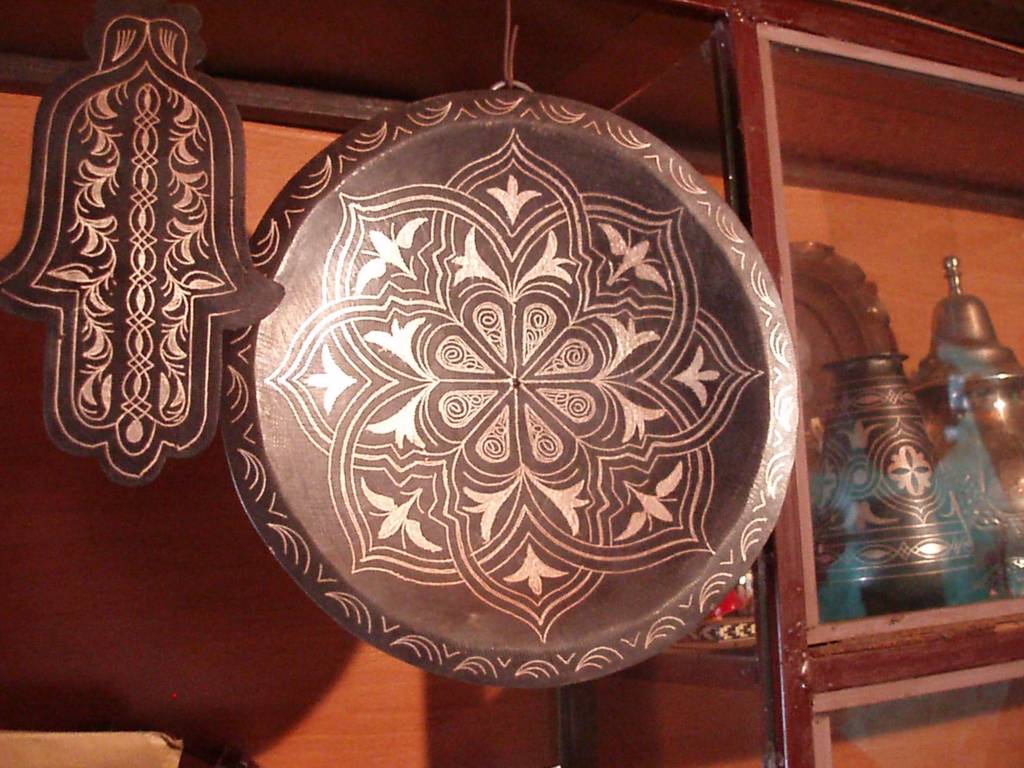
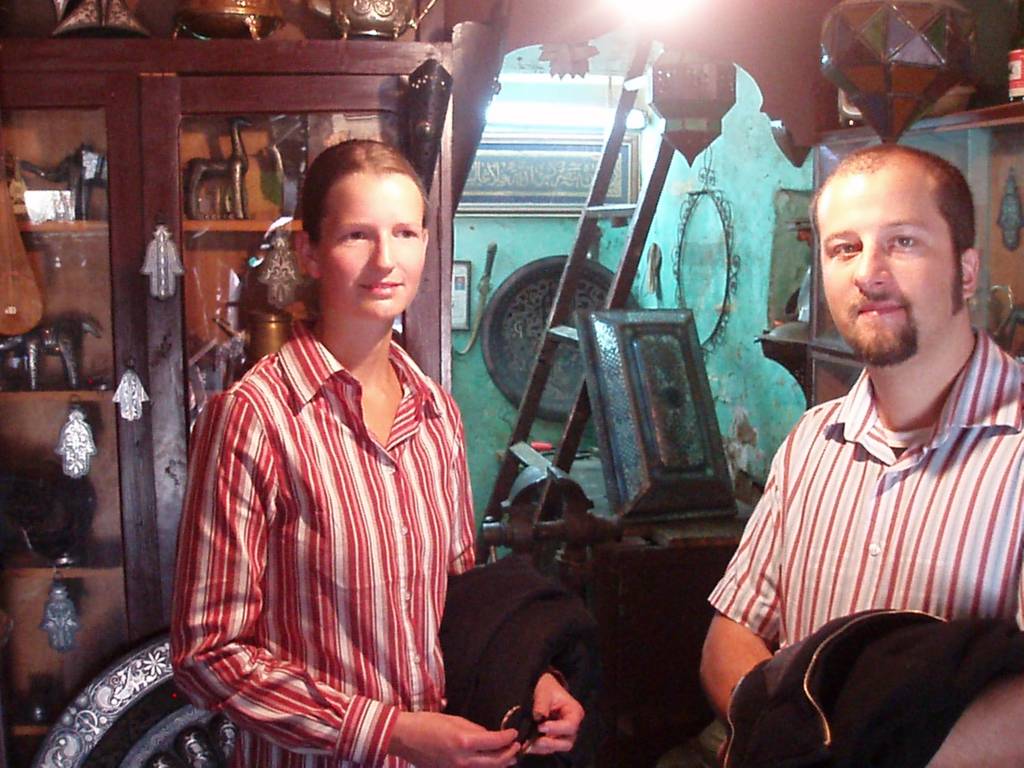

We dive so deep into the medina, the old town, that we get lost. The houses are so close to each other that only small streets remain and leave no possibility for orientation. I try to reassure Olli and Su, who fear for our safety in the empty little streets, while I get more and more enthusiastic.
The medina
We hear the muezzin calling for prayer. This is something that I only know from the exotic stories of the Orient, but in Morocco, as in other Islamic countries, it shapes daily events. As usual, every minaret in the last village now has a megaphone system, so that the man no longer has to climb the tower himself and yell from the balcony.
However, the Moroccans around us don’t suddenly disappear behind their doors and unroll the prayer rugs, as we thought. Although everything that makes noise is largely discontinued, the action on the street continued happily.
At some point we actually find our way out of the labyrinth with which we entered the medina. Like in a roundabout, we were simply thrown around through the alleys and streets and spat out again where we came from.
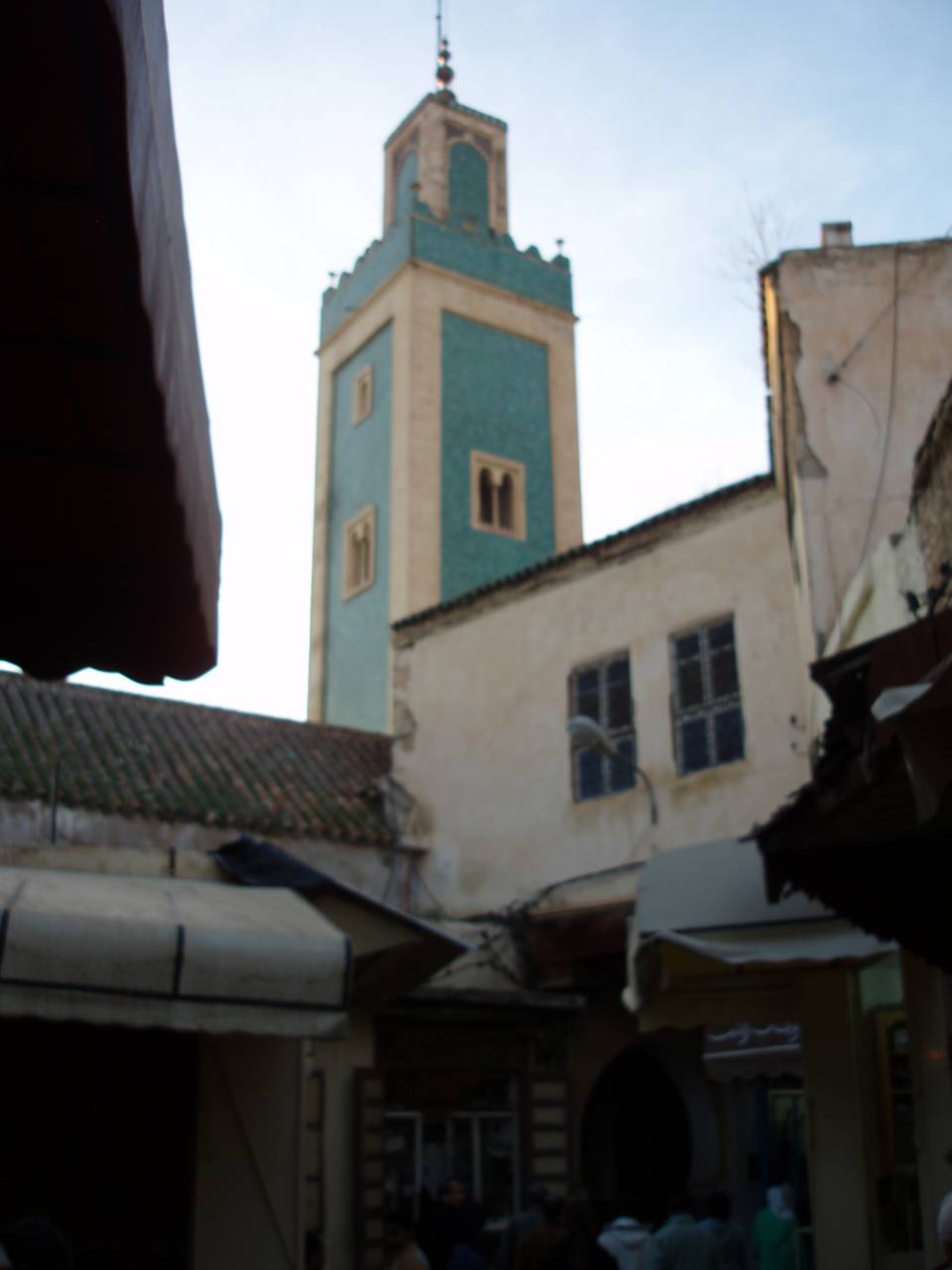
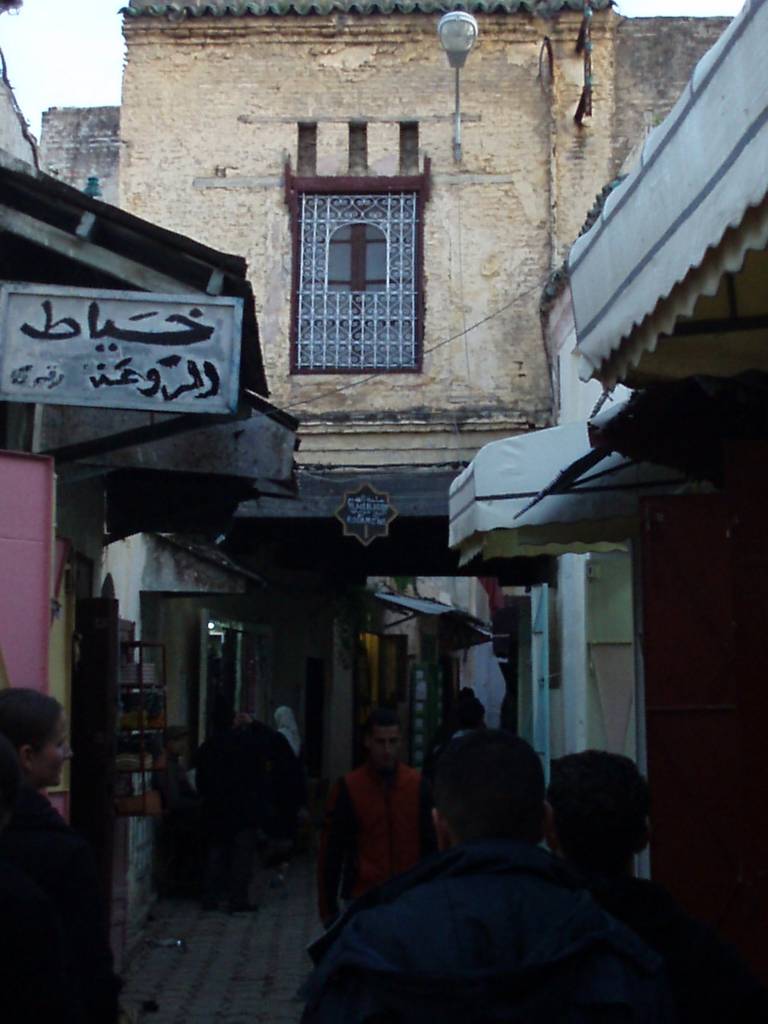
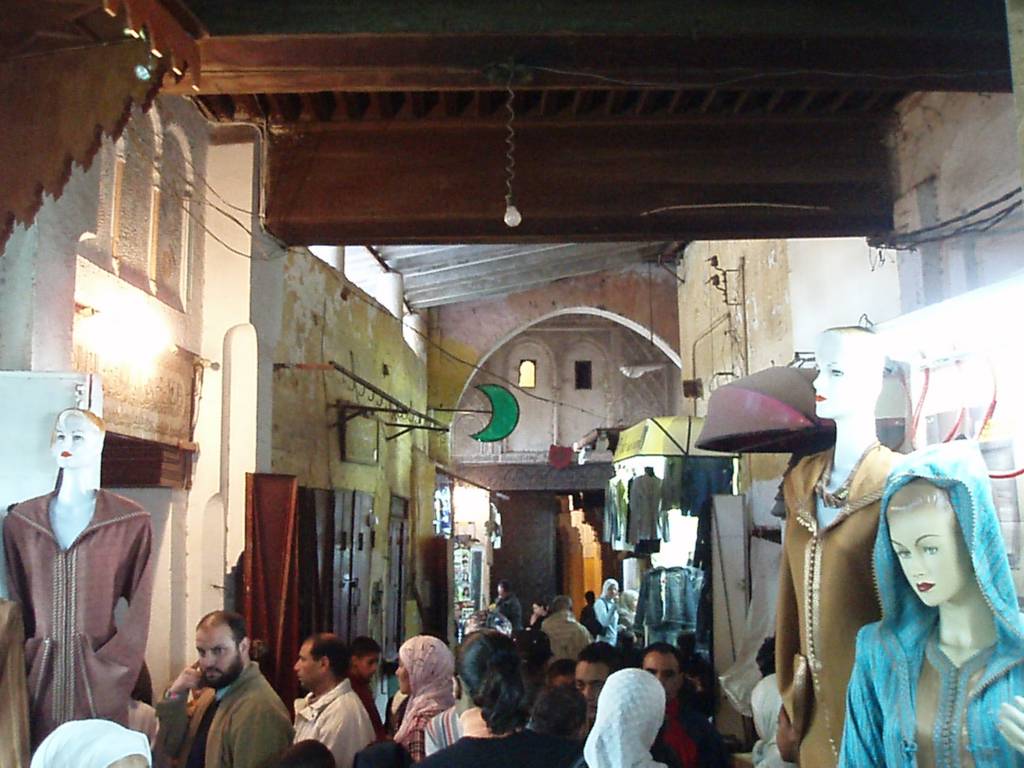
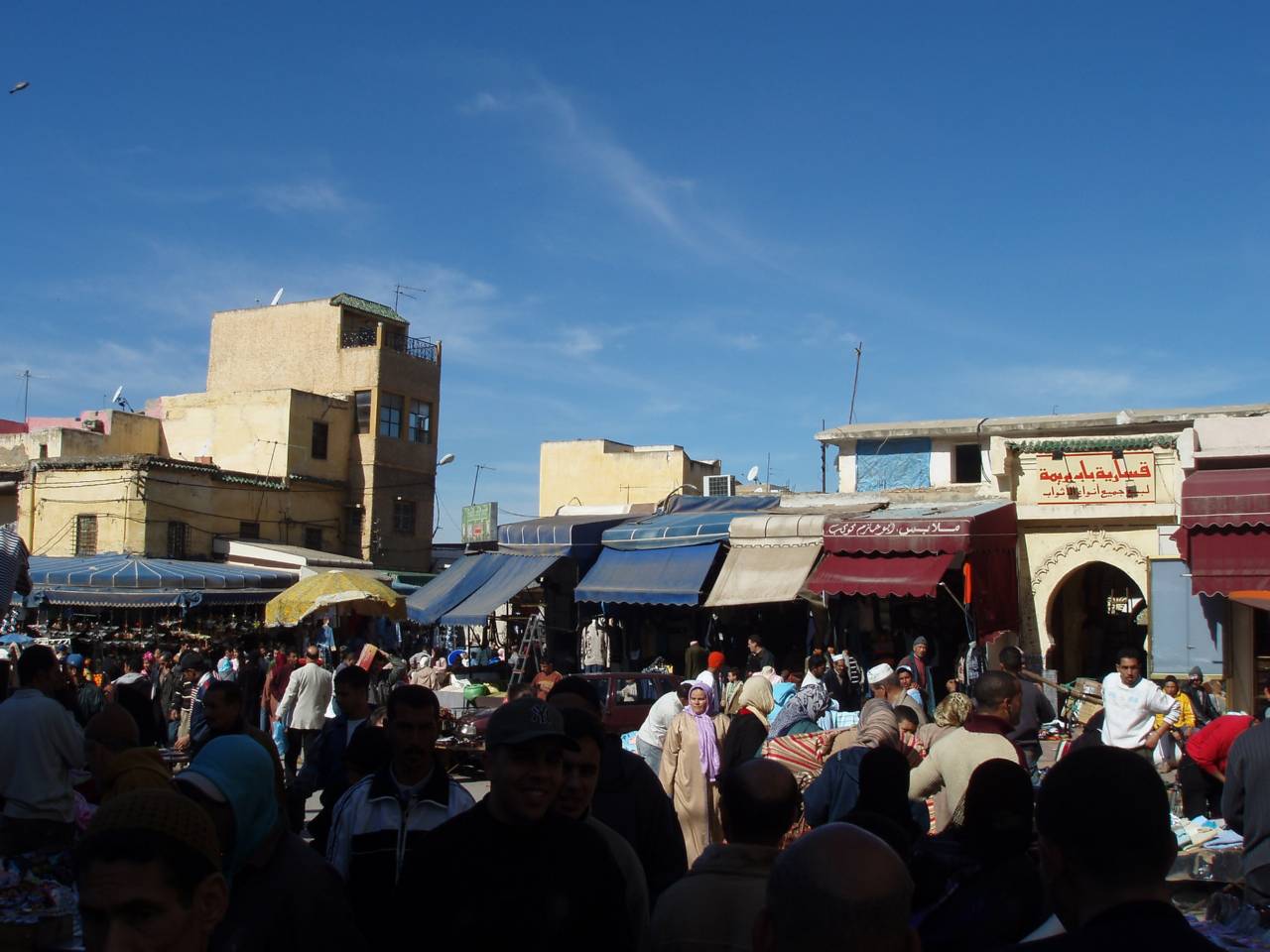
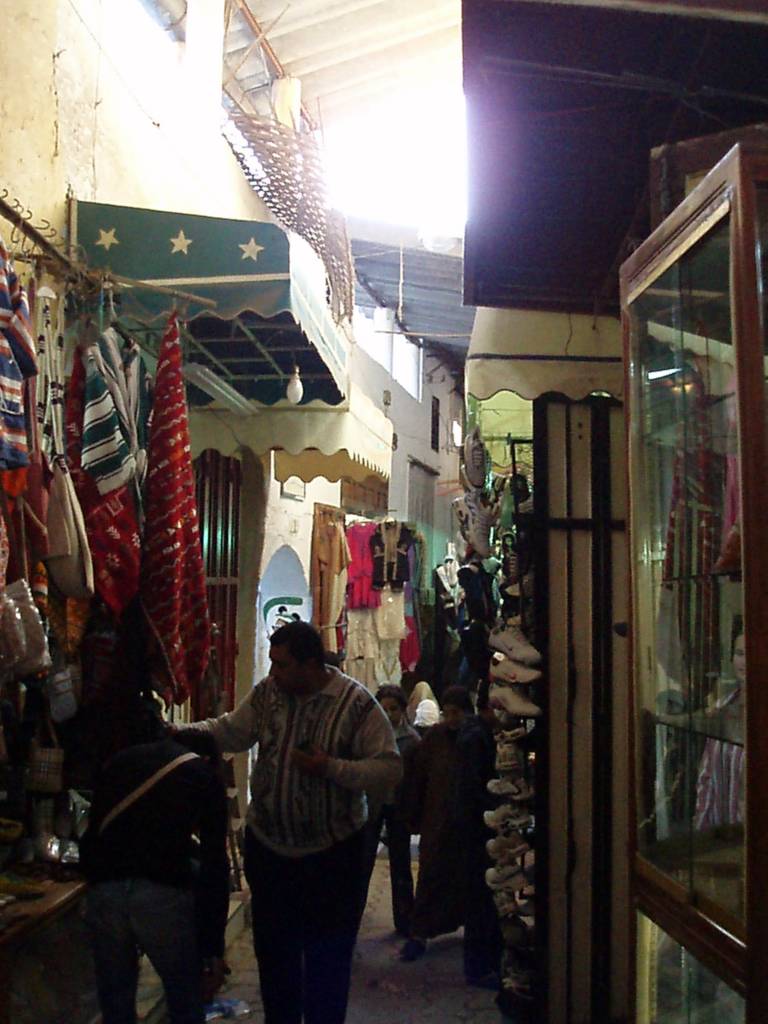
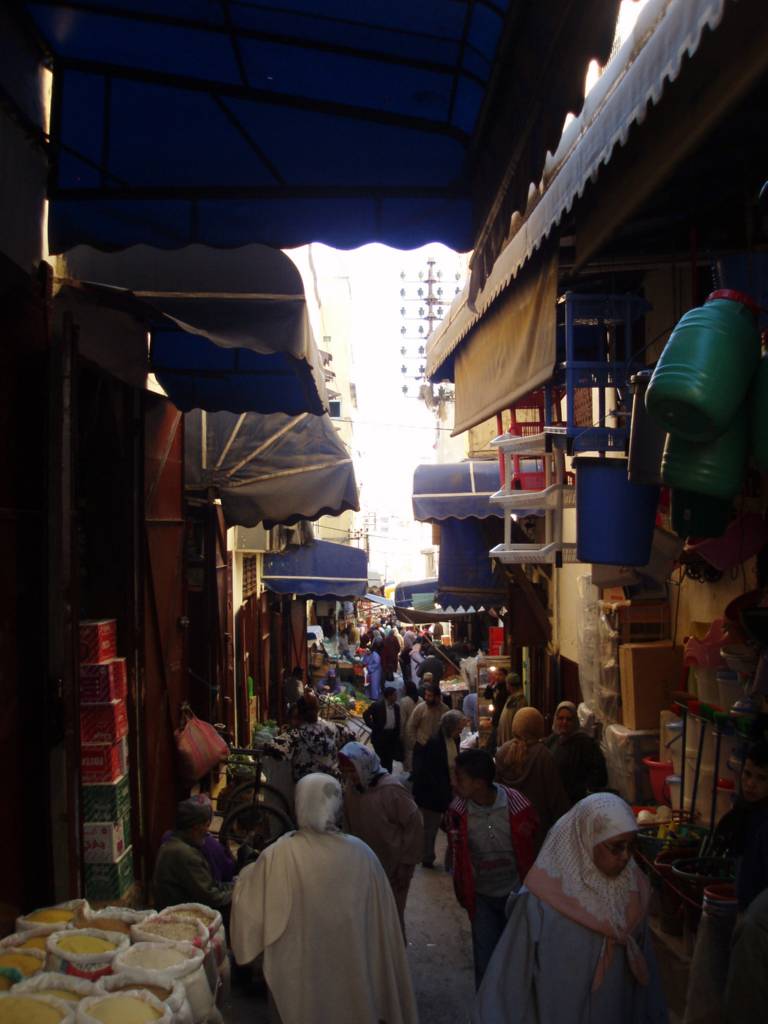
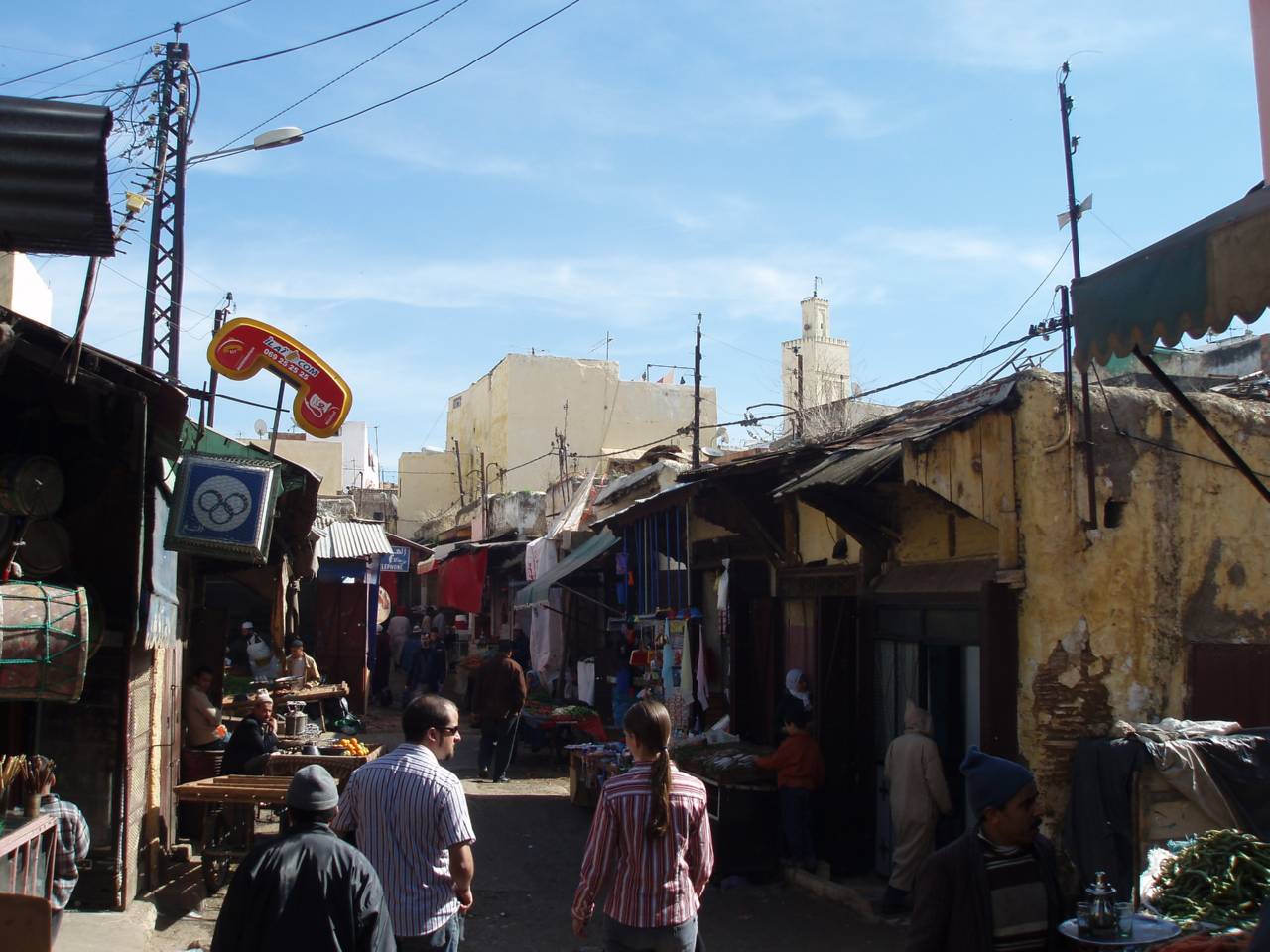
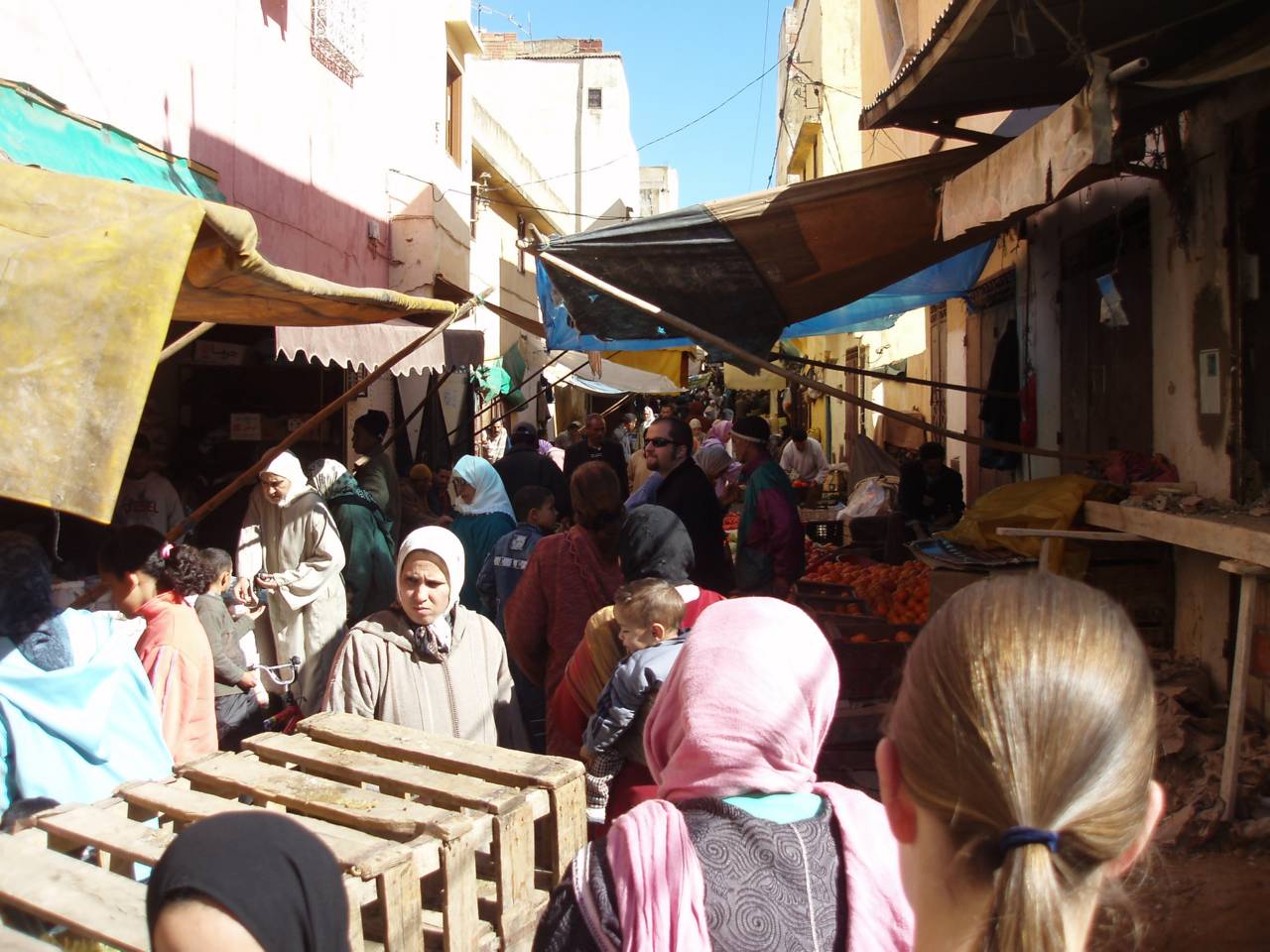
Now let’s treat ourselves to something to eat on Lahdim Square in front of Bab Mansour. We choose a restaurant that has menus, because otherwise you have to negotiate the food prices or at least agree them beforehand to avoid being ruthlessly ripped off the dining table.
We get flatbread with meat and surprisingly also french fries, although they are not on the menu and fortunately they are not charged either. A number of orders in various other restaurants in the coming days show us that these fries, like the cutlery, will of course be served with the meal.

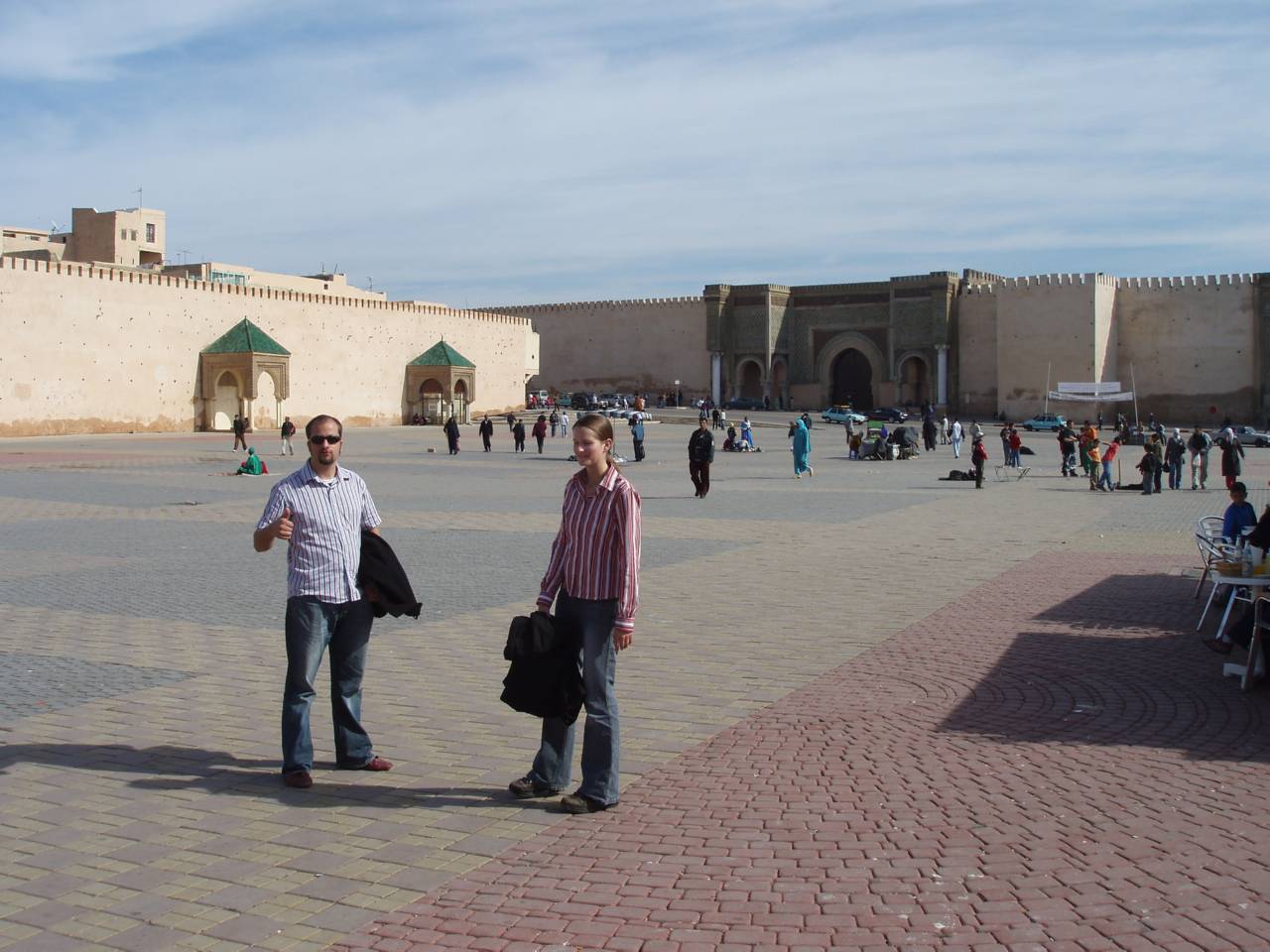
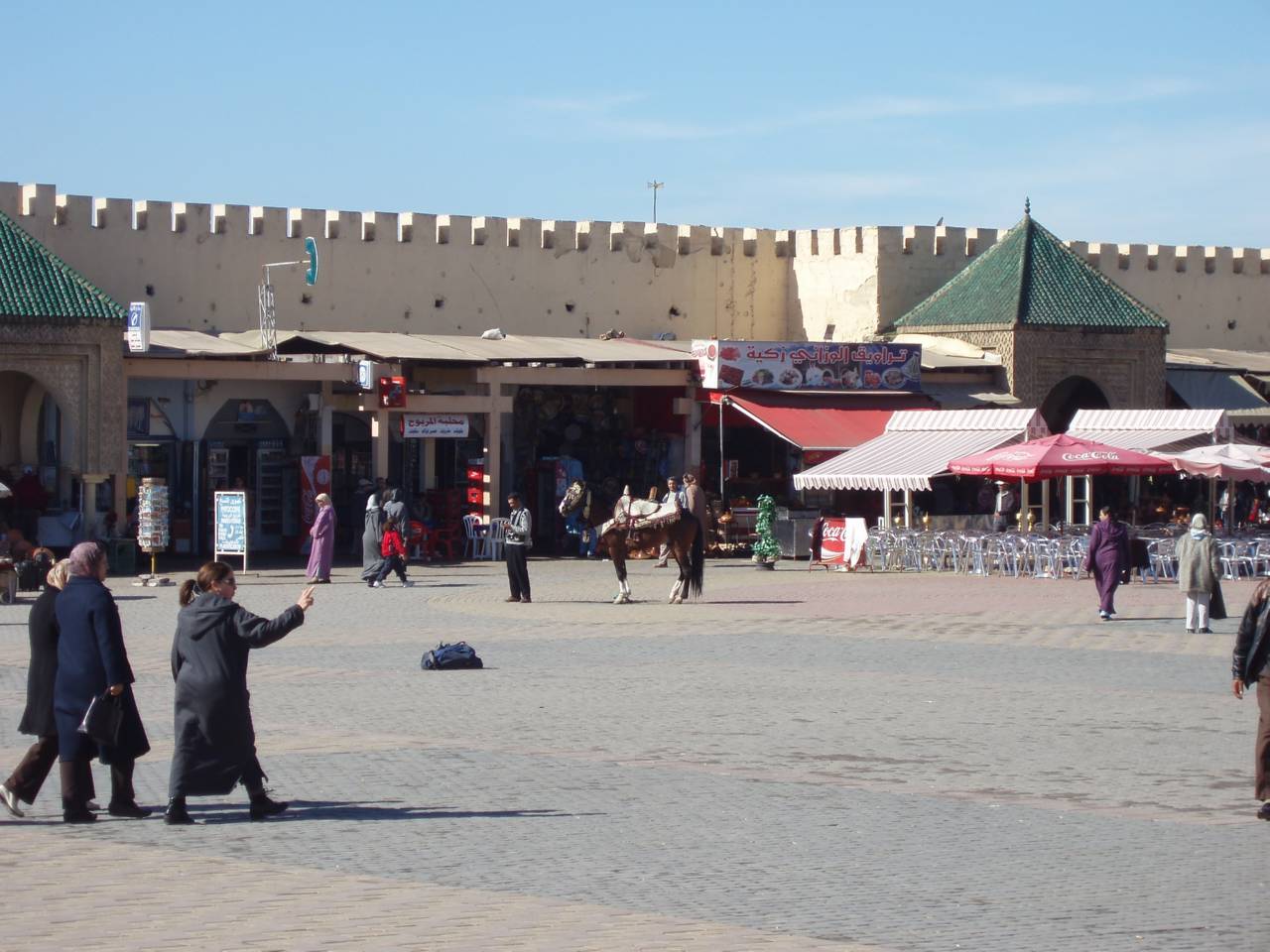
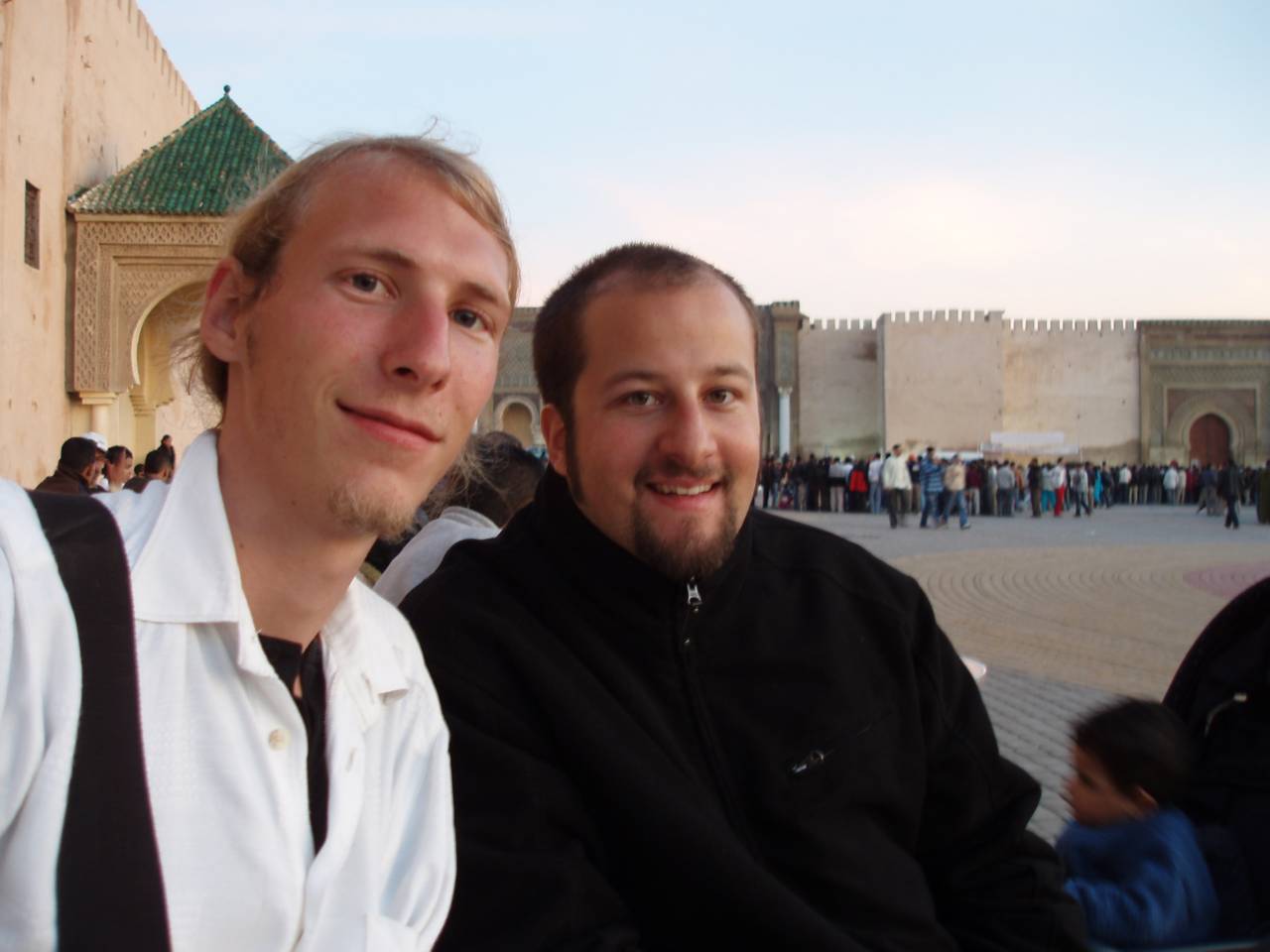
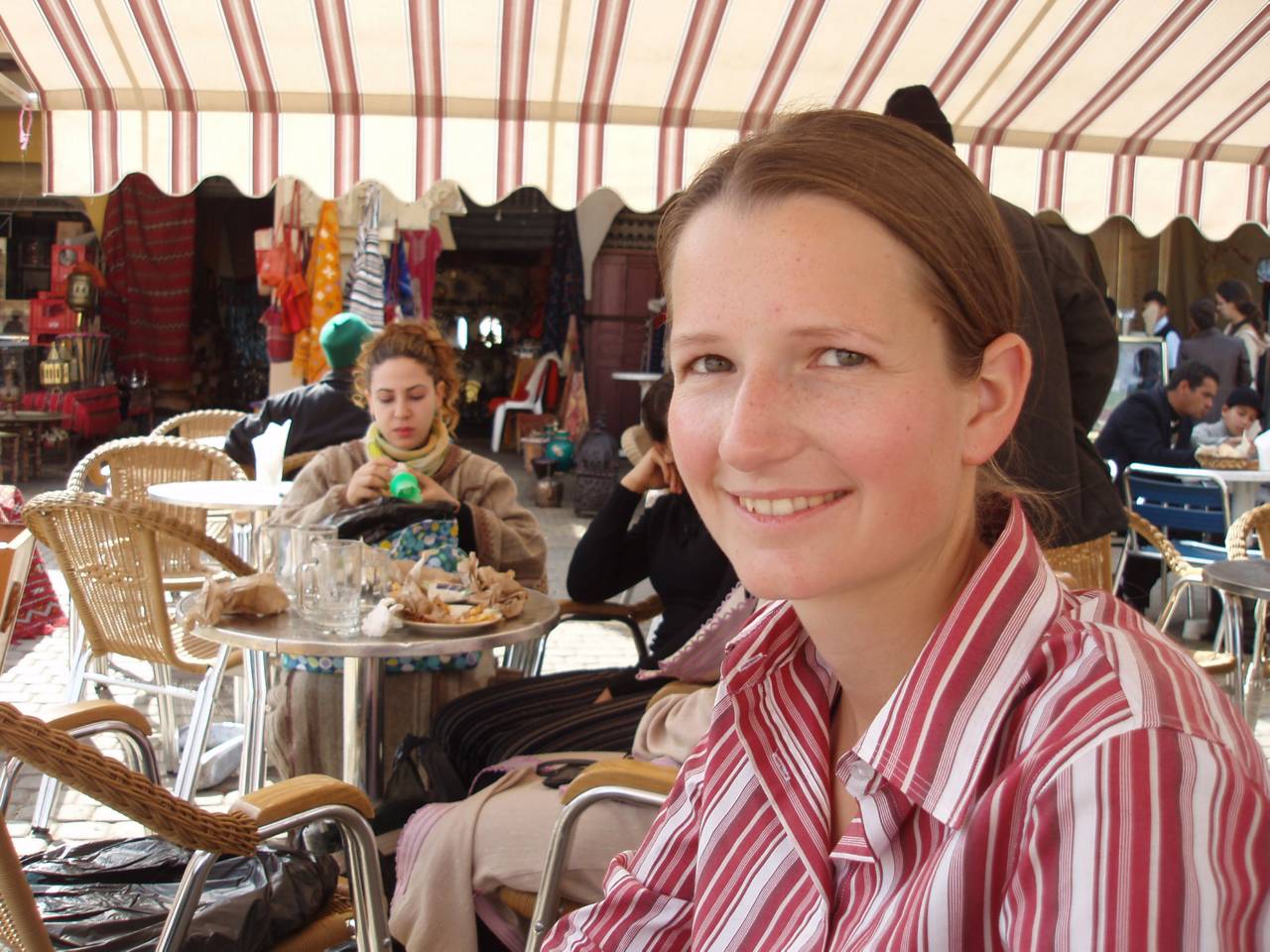
We march like kings through the Bab Mansour and brush off a few people who try to persuade us to take a carriage ride. We stroll past the sultan’s mausoleum, various carpet shops and dilapidated towers with stork nests and march along a long street on which there isn’t that much going on anymore.
Meknés is one of four royal cities and thus capitals of the various monarchs of the country. The other royal cities are Fez, Marrakesh and finally Rabat, where today’s King Mohammad lives.
Now we want to find “Ville Imperiale“, the actual royal city, which my travel guide tells me about:
The sultan Moulay Ismail had asked for the hand of the daughter of King Louis XIV and to impress the French he built palace after palace in his royal seat, which he had transferred from Fez to Meknes, with their gardens and fountains modeled on the Palace of Versailles. Nevertheless, Louis and his daughter did not want the sultan, which could also have been due to his harem of 500 women. Moulay Ismail also loved larger dimensions in other respects: 15,000 horses are said to have been in his stable and 6,000 slaves are said to have stayed in the cellars of the palace during his life.
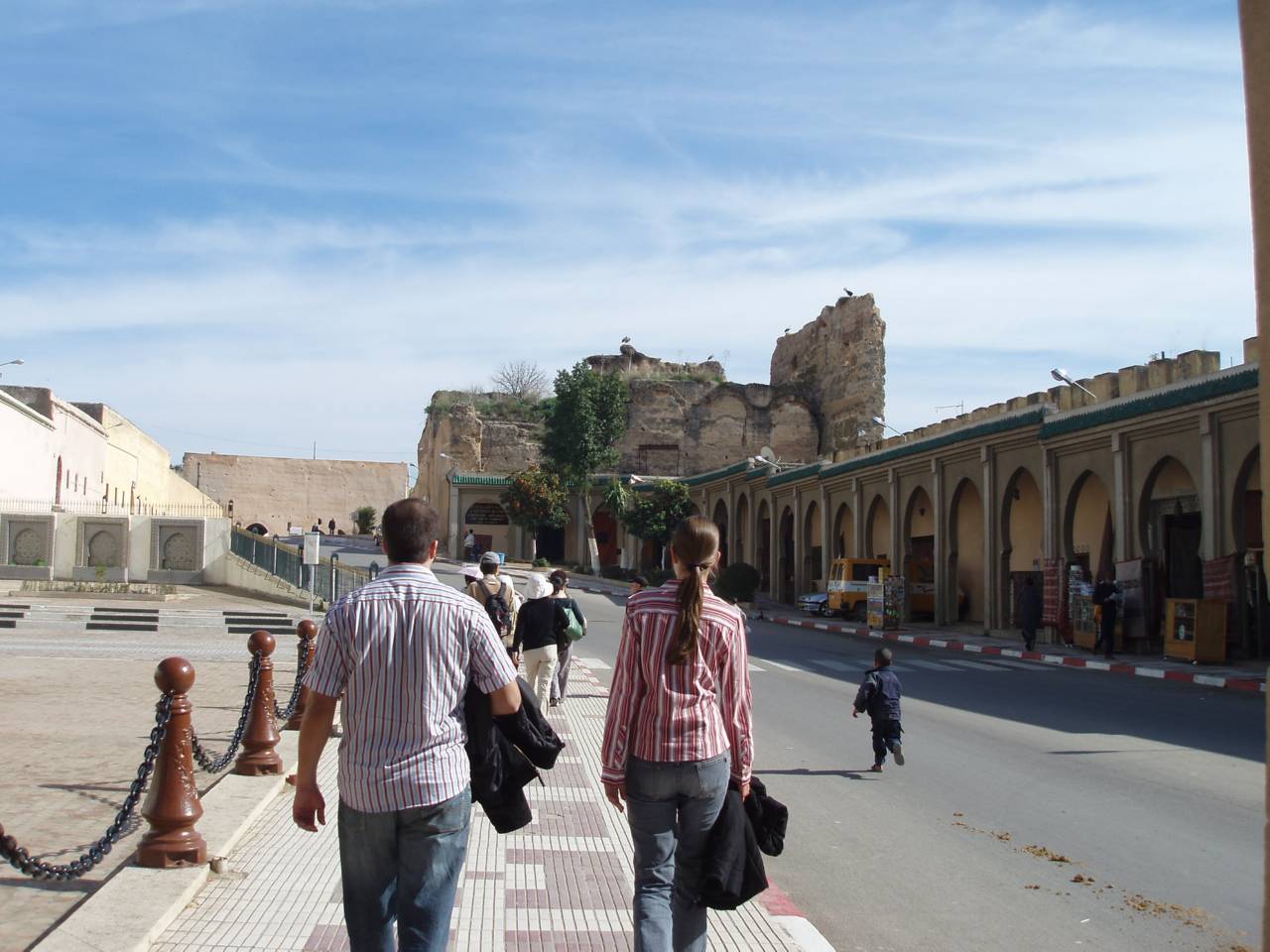
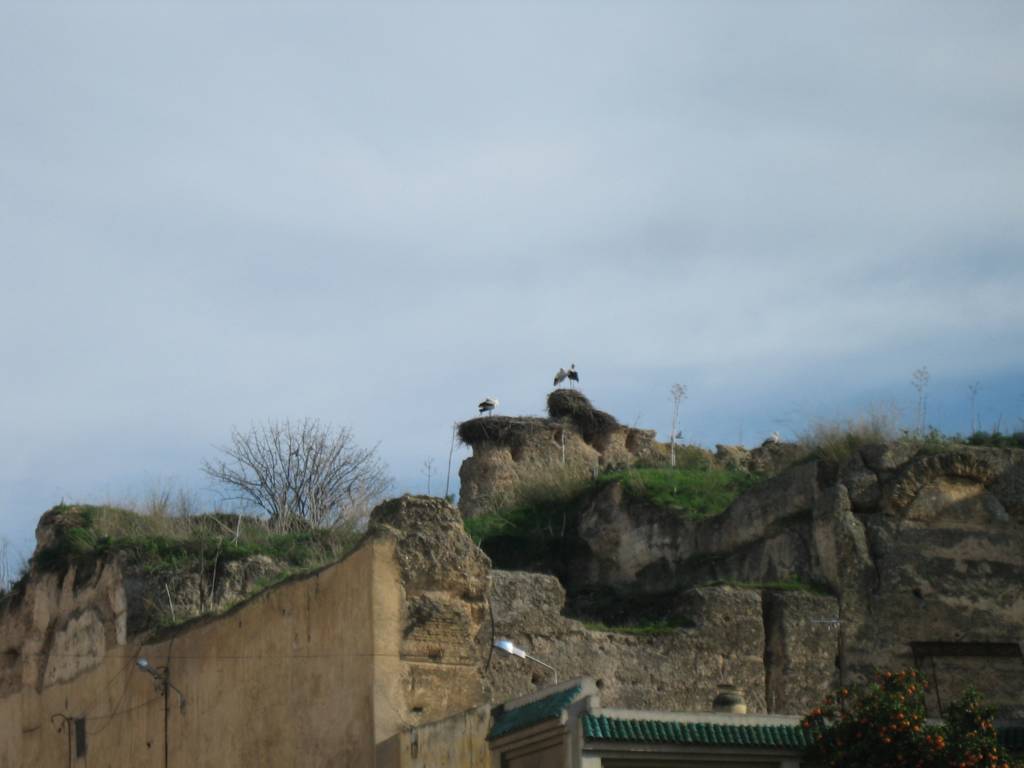
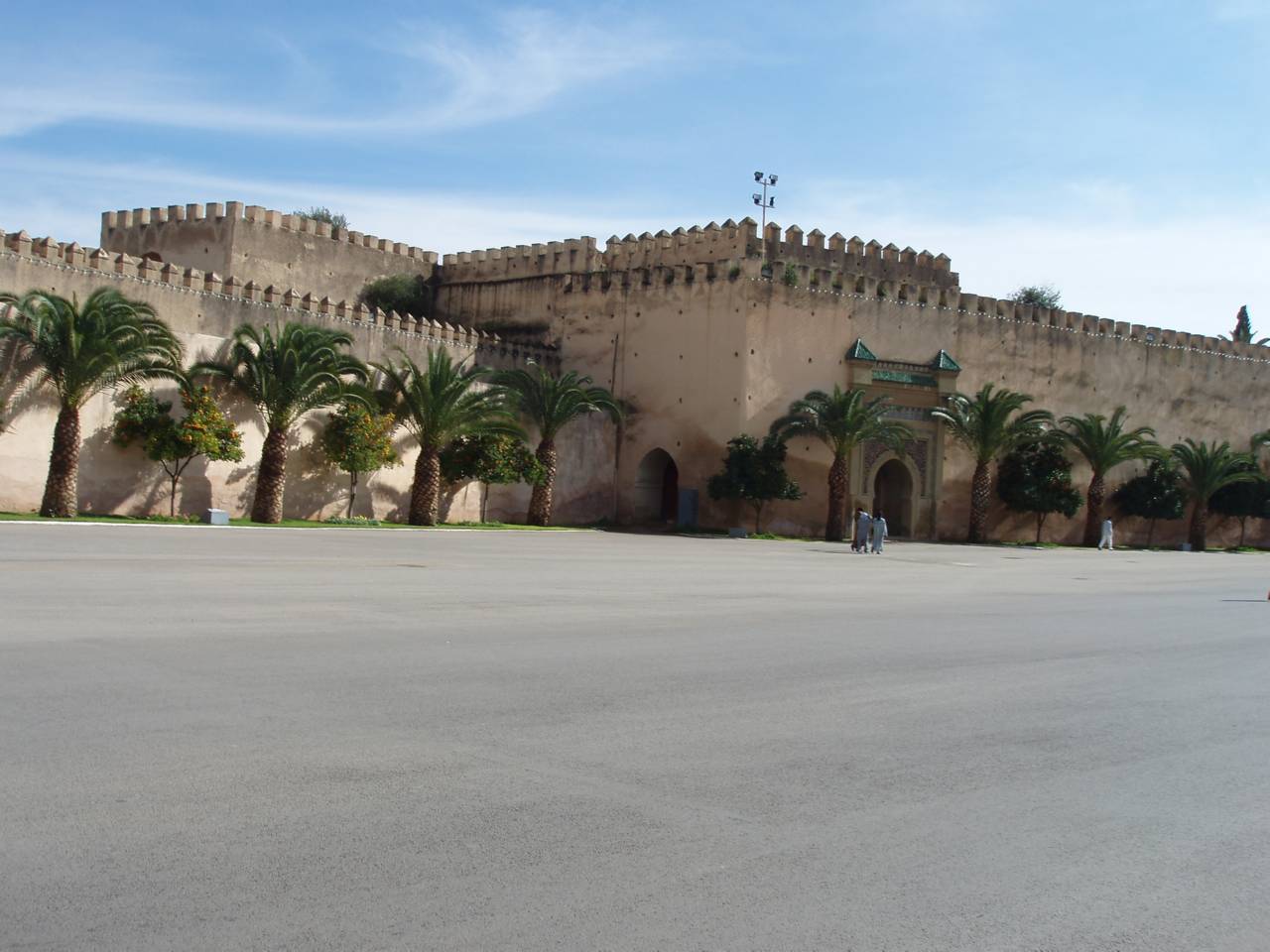
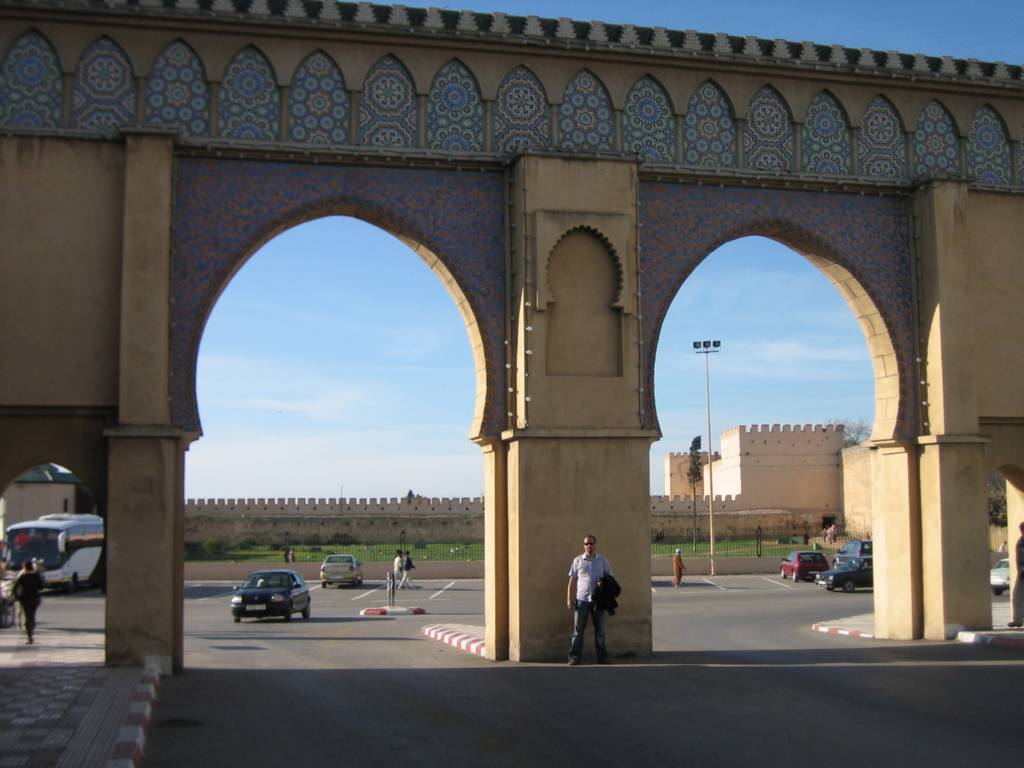
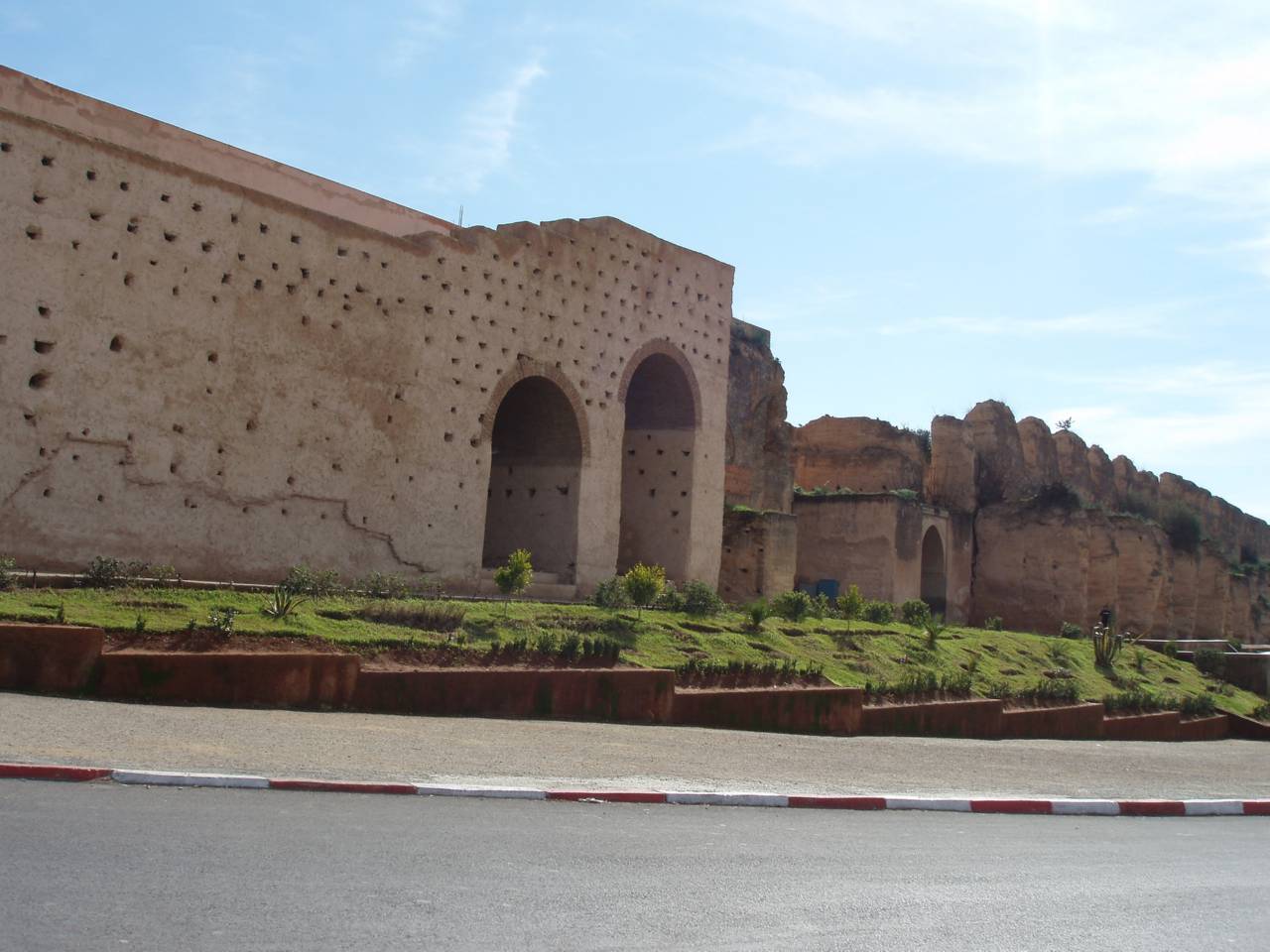
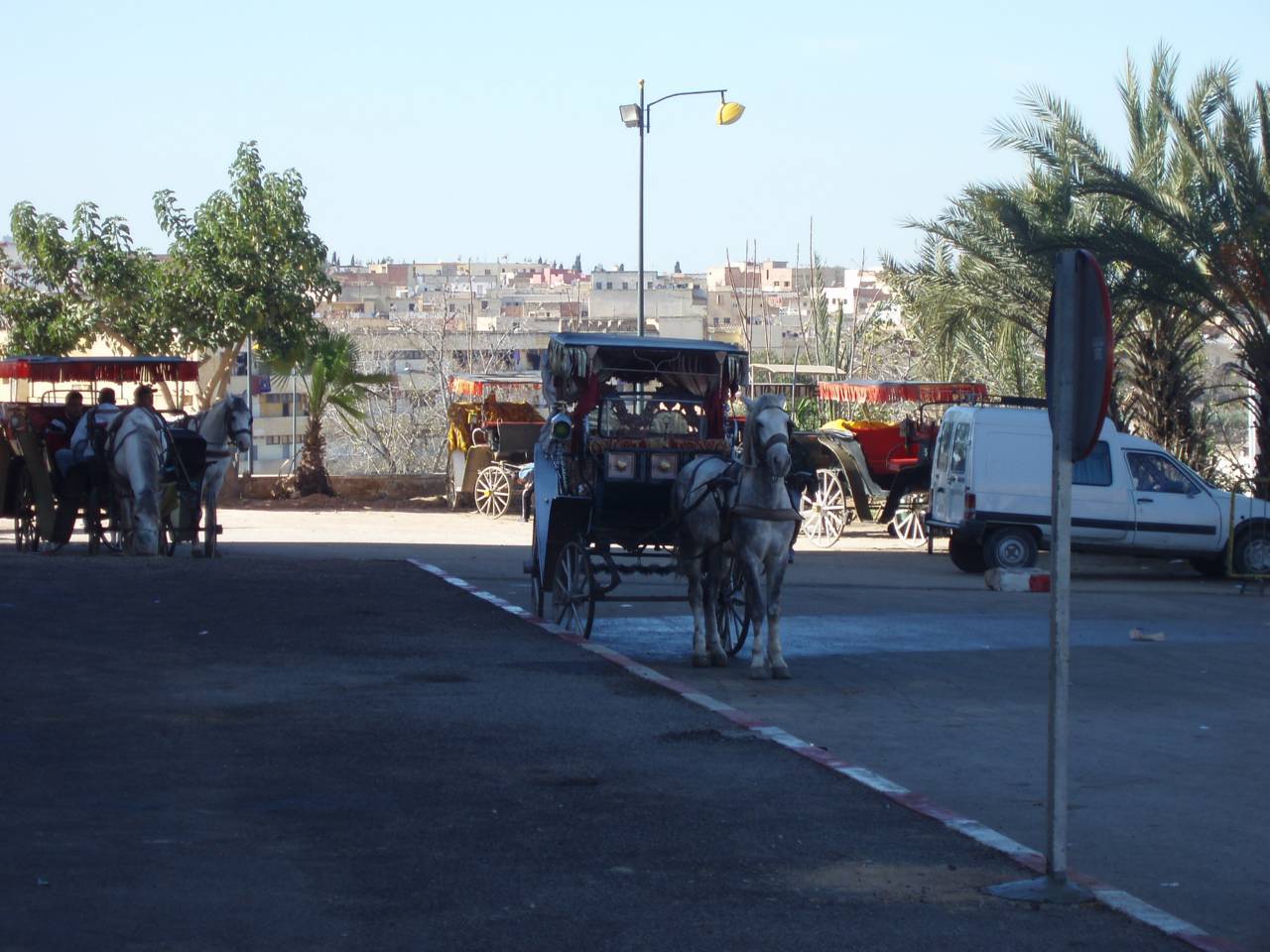
A carriage passes us again and one of two men on the carriage invites us to a ride. Since the road now seems quite desolate and wide, the coach with upholstered seats and hood doesn’t look so bad anymore; I suppress the thought of so much luxury and, to my surprise, turn away from Olli and Su, thank the man and assure him that we have no need. The man begins to praise how good and comfortable the carriage is and how spacious the grounds are.
The Royal City
He makes us an offer of 150 dirhams, whereupon I immediately turn away and complain that it’s far too expensive, that we’re young and can also walk splendidly. He reduced it to 120 dirhams and I said 80. At 90 dirhams and an offer of a one-hour tour of the city, we sit down on the cushions of the carriage and enjoy the ride.
The man had jumped off the coach to talk to us, translated what had been arranged for the coachman and pulled away when we left. Since the coachman didn’t speak English, the witty man had managed to make the coachman and us dependent on him through this bargain…
WE TREAT OURSELVES TO THE LUXURY OF A CARRIAGE RIDE AFTER I HANDLE THE COACH DRIVER DOWN ACCORDING TO MOROCCAN TRADITION
The royal stables building isn’t open yet, so we drive even further to a water reservoir, where we get out and stretch our legs.


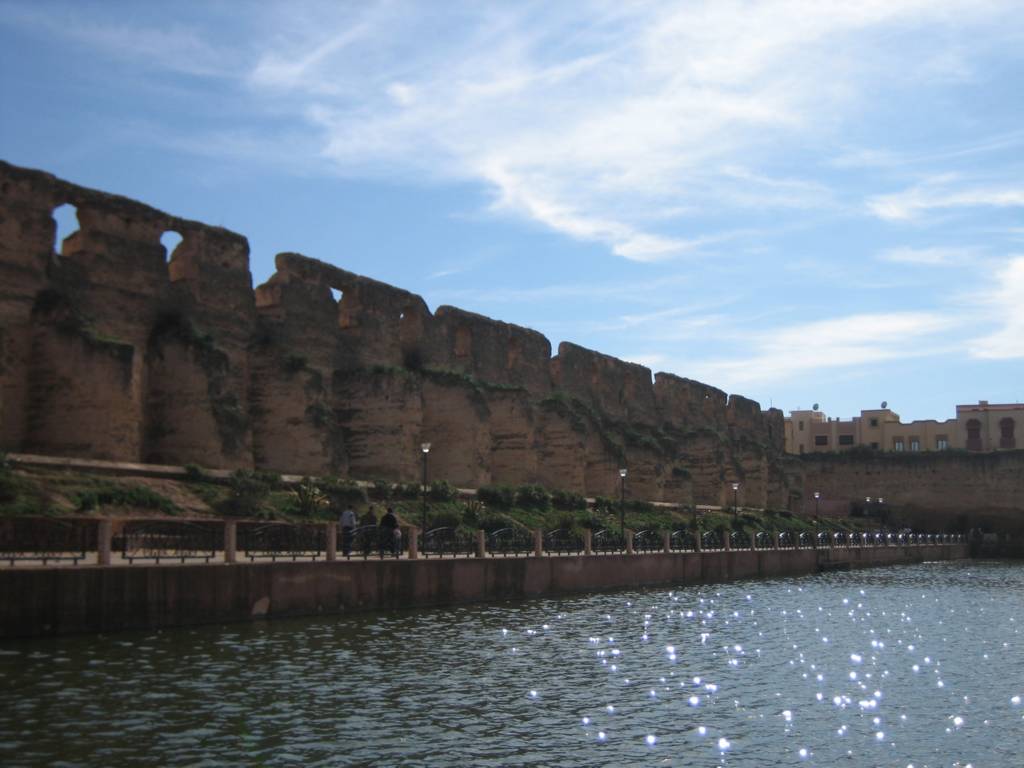

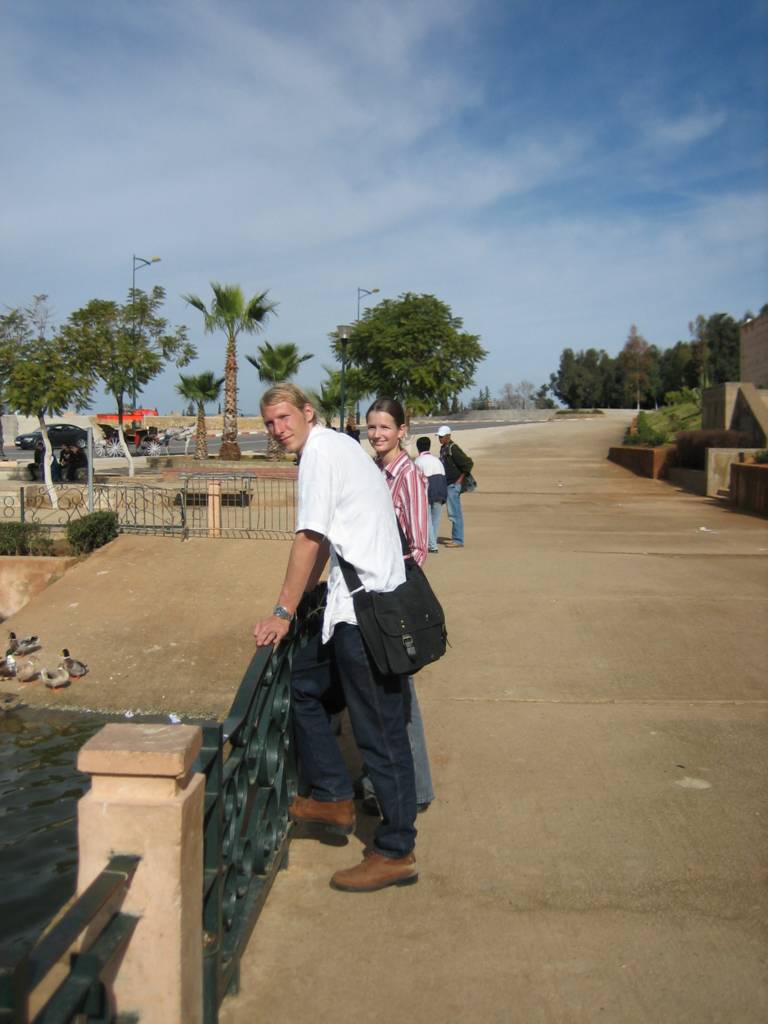
At the entrance to the stables and the granary, the coachman lets us get out for a visit. The coachman’s friend suddenly reappears and offers us his tour. We gratefully accept the offer.
The grounds of the Royal Palace are gigantic. However, the roof of the vaunted stables had collapsed and the grass is now growing between the hundreds of pillars.
We find our carriage again and the journey continued through the city. We pass the second city gate and the market, where we were in the morning.
The hour is over quickly and we pay the coachman the agreed wage. The man who arranged the carriage ride with us appears again and shows us the entrance to the mausoleum of Moulay Ismail. The tomb of the scorned sultan isn’t particularly spectacular though, so the business-minded man takes us to the dungeons, which aren’t deep under the whole site, but don’t offer much to see either. He tells something about the story; nice, but without being asked, so when we say goodbye his wages are not as high as he had hoped; when we hand him the few coins and leave, he makes a face like a kicked dog.
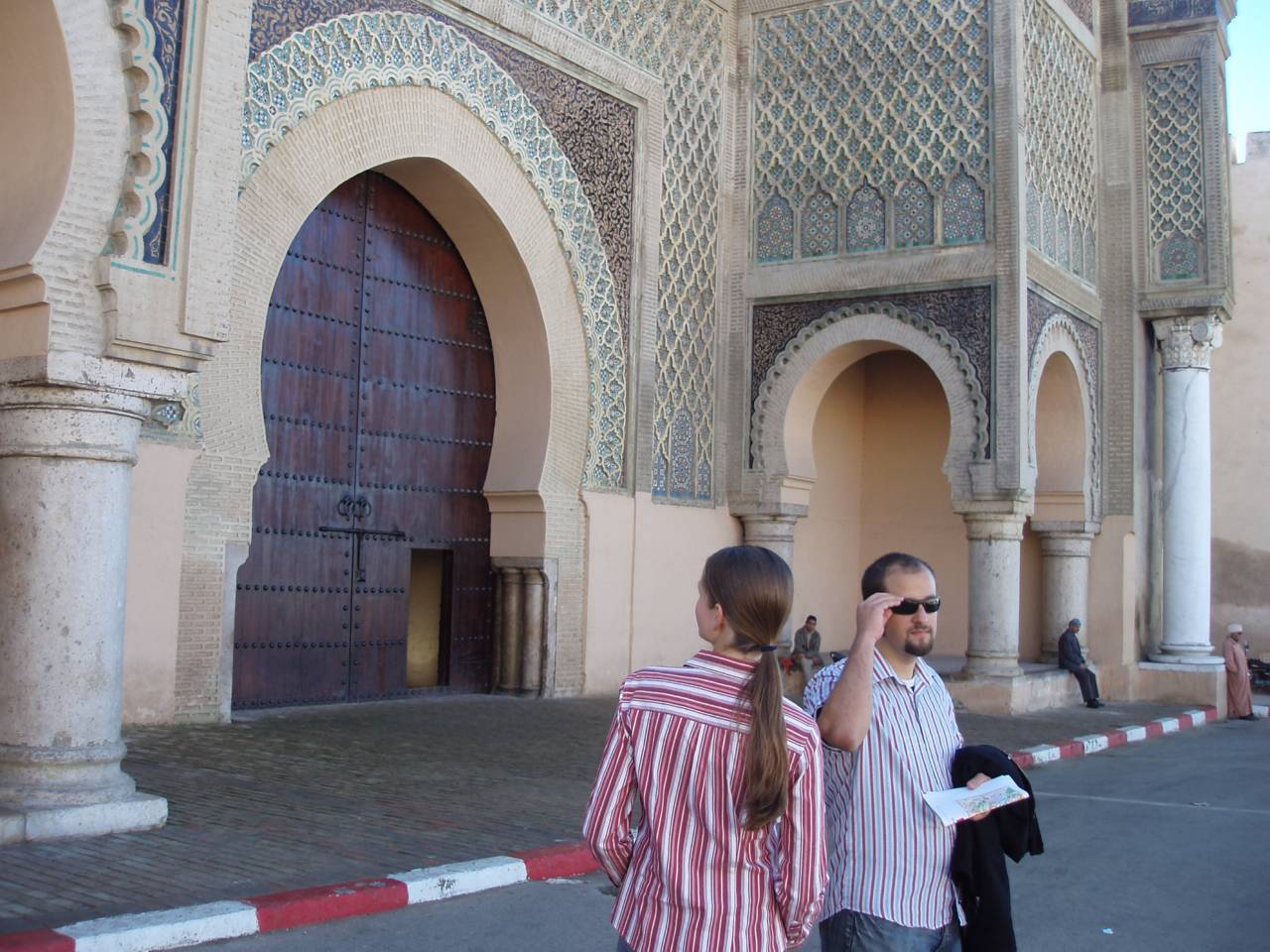
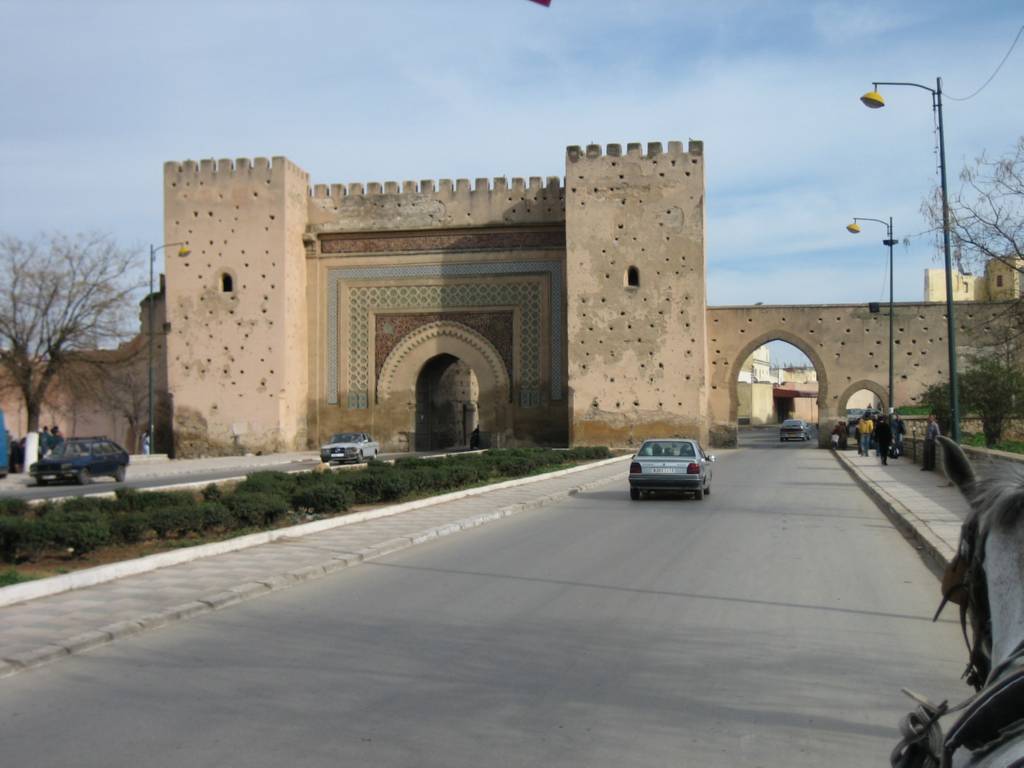
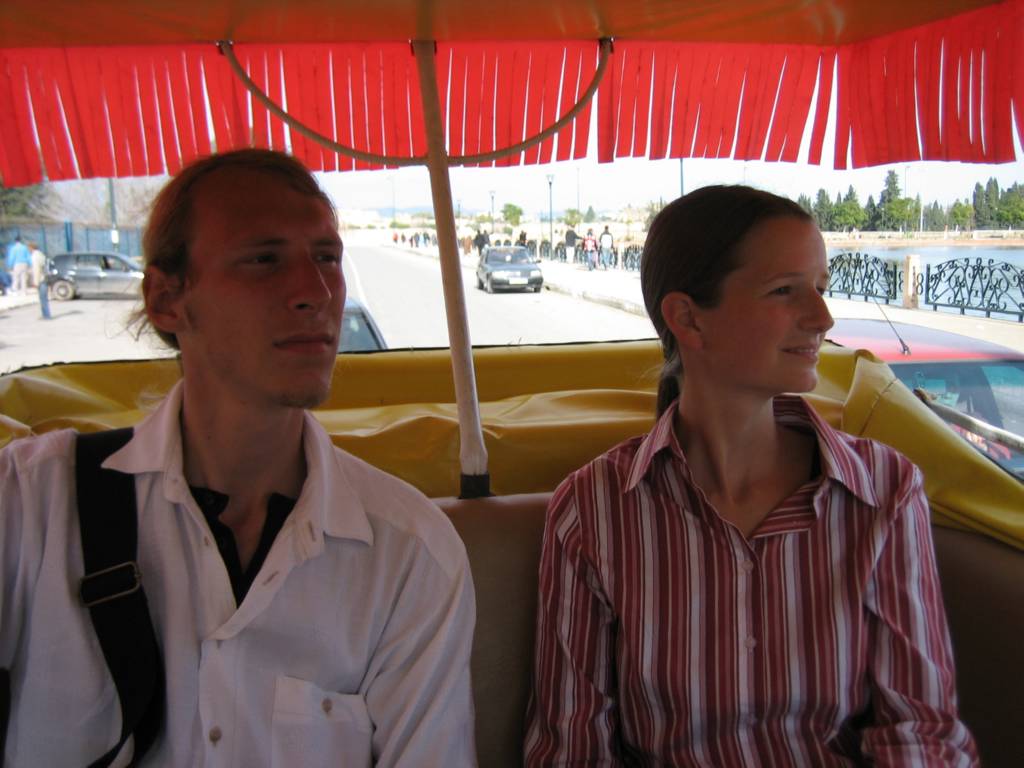

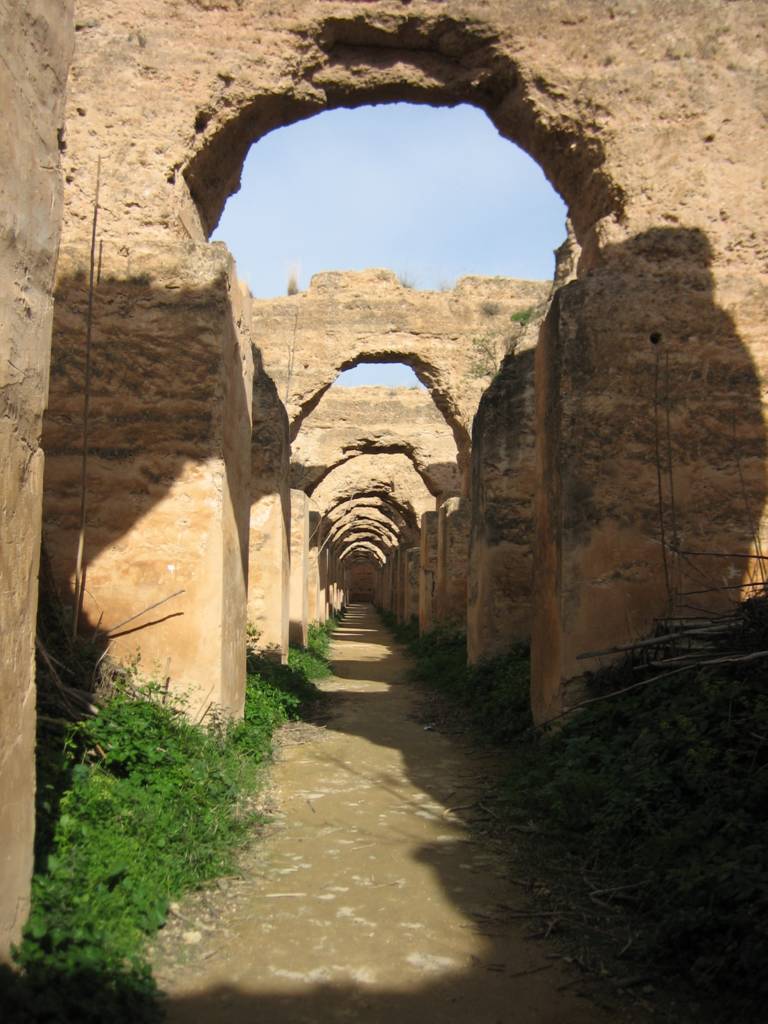
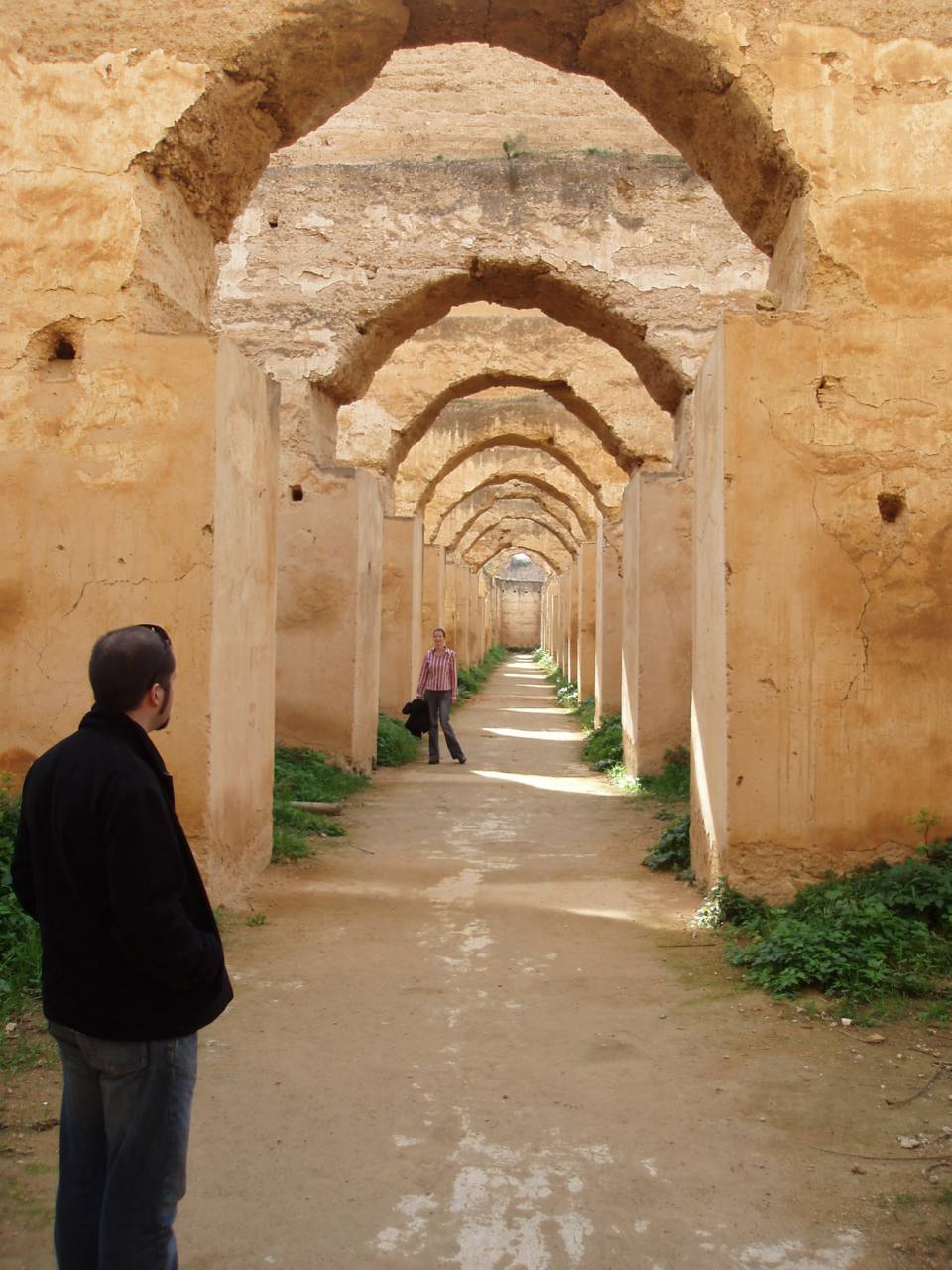
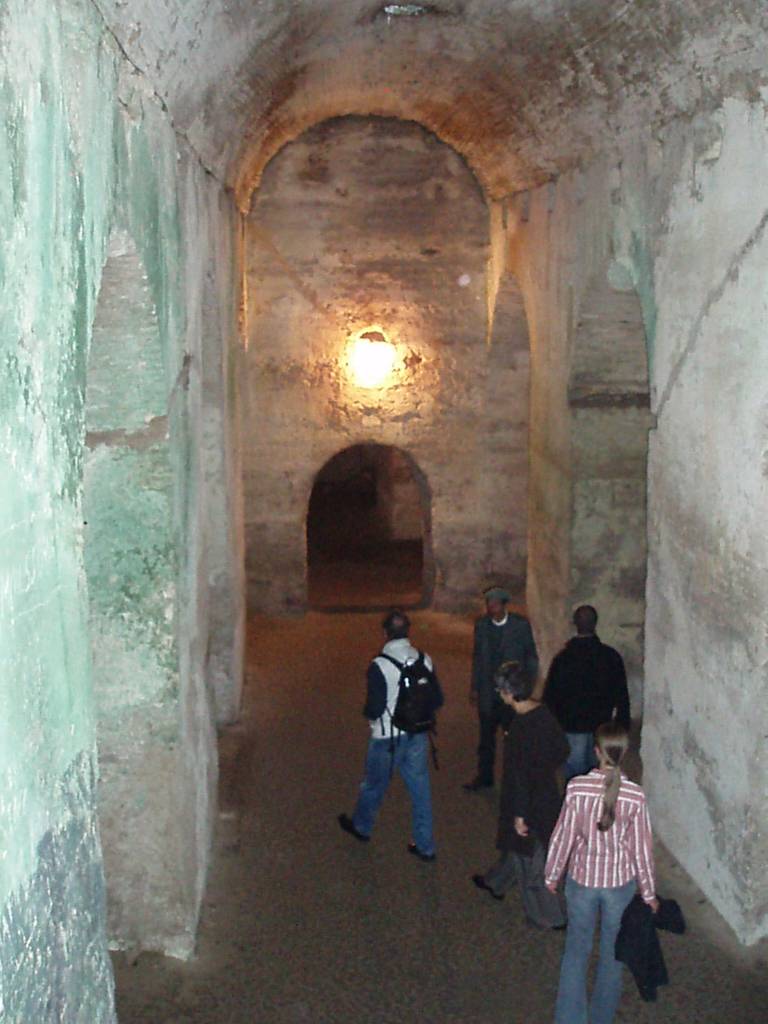
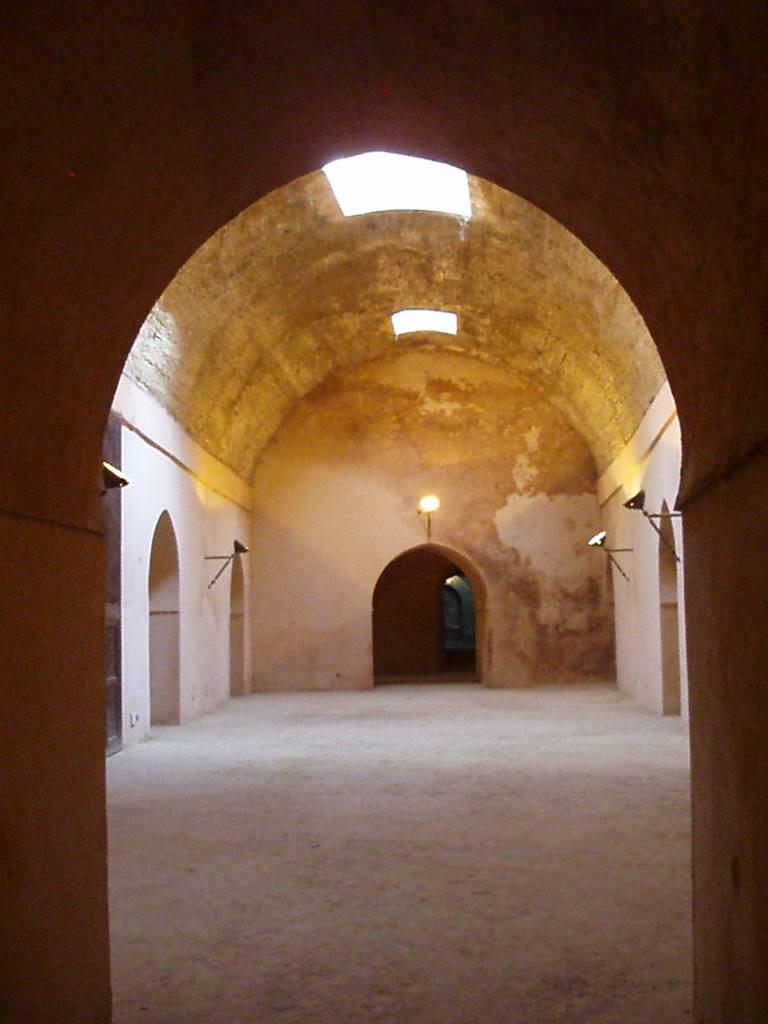
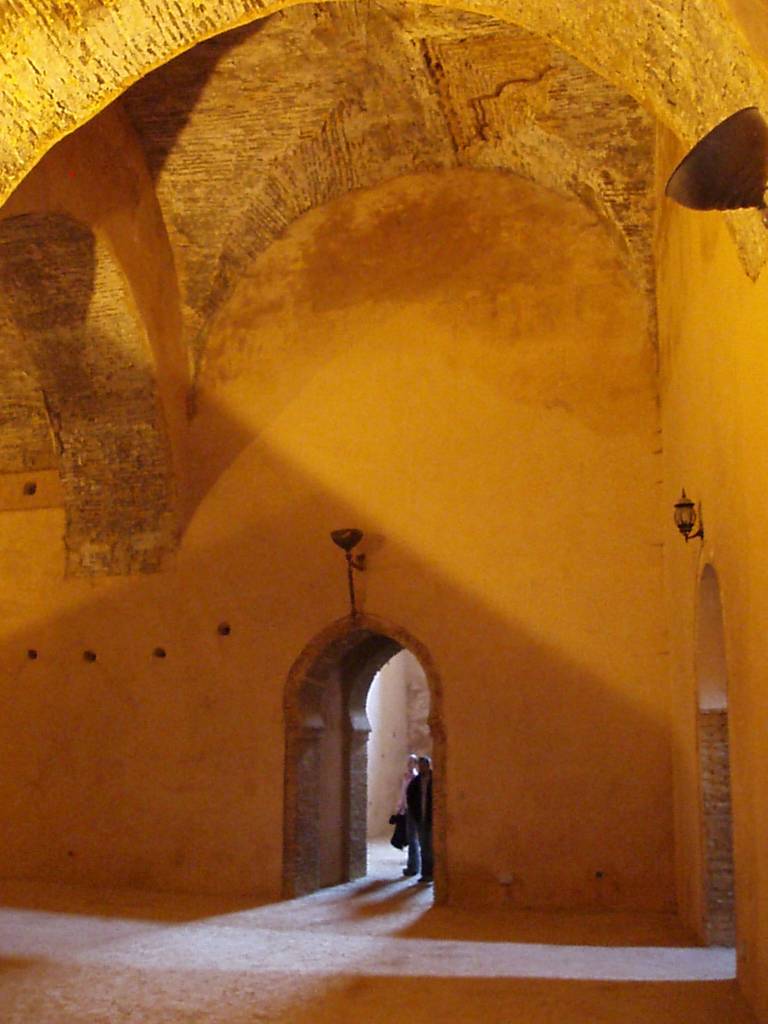
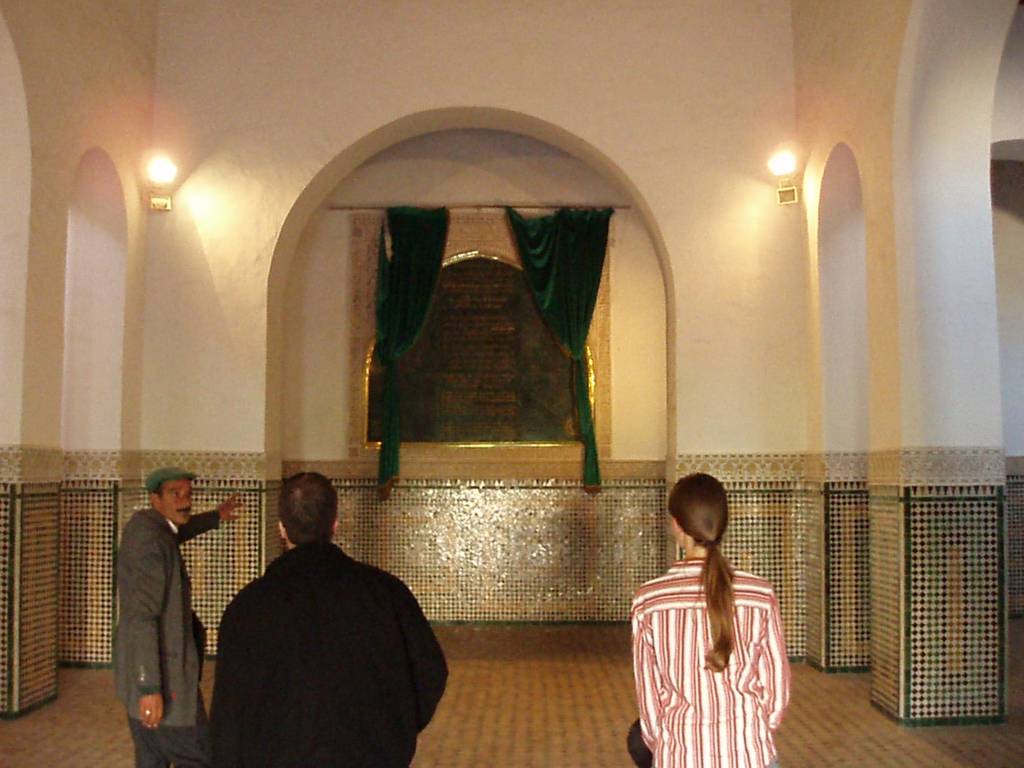

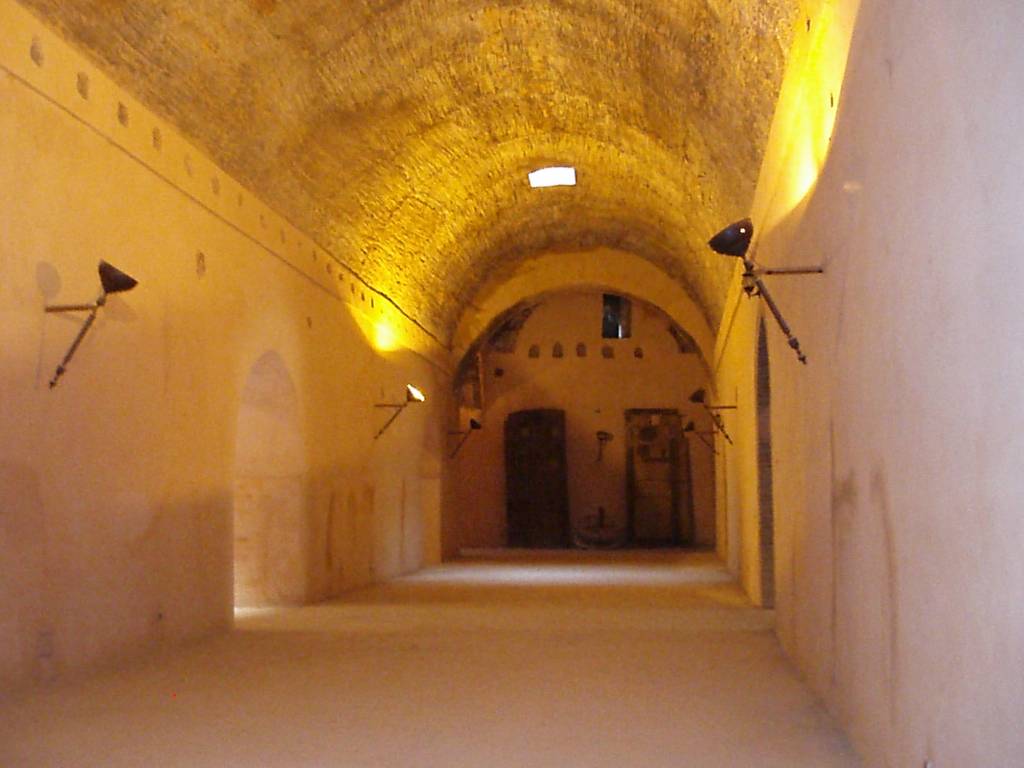
We return to Lahdim Square and continue strolling through the medina, through alleys where shops are lined up like normal shops in a shopping arcade and people are shopping. In addition to shoe and clothing stores, there are also hairdressers and small bakeries. A man approaches Olli, asks him where he comes from and invites us into his shop. Since Su and I don’t say anything to the contrary, we also pass as Finns.
The world of Berber carpets
The shop offers a collection of beautiful Arab and Berber jewellery. The man also asks us to visit the first floor. Here we are offered a whole gallery of carpets, and after being offered a seat and “Berber whiskey”, as Moroccans jokingly call their peppermint tea dissolved in sugar, the introduction begins: unnoticed, an assistant had walked into the room with an armful of carpets.
The master begins by explaining the difficult art of carpet making and the differences between carpets made by men and women. At a hint, the assistant first shows us light carpets that can also be used as blankets, in colors such as saffron yellow and indigo blue or in the natural color of the wool. The carpets are mixed or made individually from camel, sheep or lamb’s wool. The patterns and colors differ; the master assures us that even if one tries to copy a pattern, no carpet looks the same.
After the light blankets with few colors and patterns, the heavy Moroccan carpets in the “old style” are now the program item. First, the master and assistant hold the carpets in front of our noses, then they are placed at our feet to feel. The assistant more often arouses the anger of the boss if he does not have the right carpet at hand quickly enough and the flow of the performance is disturbed.
The old style carpets are provided with colors and patterns that are supposed to symbolize the sky with wavy lines and dunes with blue areas.
Again, there are many differences, as the carpets also come from different Berber tribes: there are the tribes of the Rif Mountains, tribes of the High Atlas, the Middle Atlas and the Deep Atlas. Of course, each tribe has its own style.
He still tries to get us to make some cheap starting bids or estimates of the value of the carpets, but we are impatient to do so and so he says goodbye to us very friendly.
After the tribal rugs, there are now the gift rugs, which men bring to women as gifts on various occasions. For example, there is the carpet for the woman if you want to ask for her hand in marriage. Then of course there is the carpet as a wedding present. Then there are cozy rugs for the pregnant woman to wrap herself in and then the rug for the baby. This carpet is full of colorful dots; the color that the baby touches first should be the color of his clothes from now on. In the end, you will find the right carpet for every event in life in this shop.
The dealer asks us if we don’t want to take a look at the small carpets, but we quickly wave him off. We have reached our daily quota of carpets. But of course he doesn’t want to just let us go and he explains the last part of the game to us using two Berber words: “ishmi” for “get rid of it” and “chahri” for “watch again“.
And so all the rugs that lay at our feet are brought before us again, and we wave them away or designate to see them again (so as not to offend the poor merchant entirely). However, as he can certainly imagine, but tries to prevent by acting skillfully, we thank him very much for the nice presentation of his assortment, but tell him that we are not interested in buying anything.
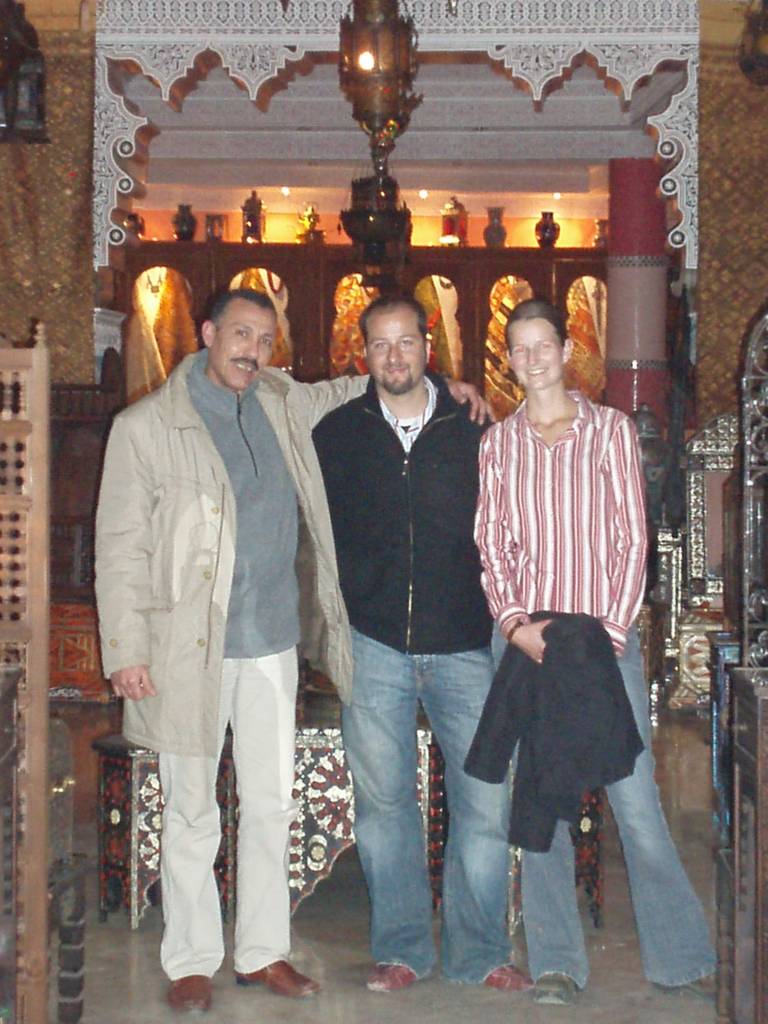
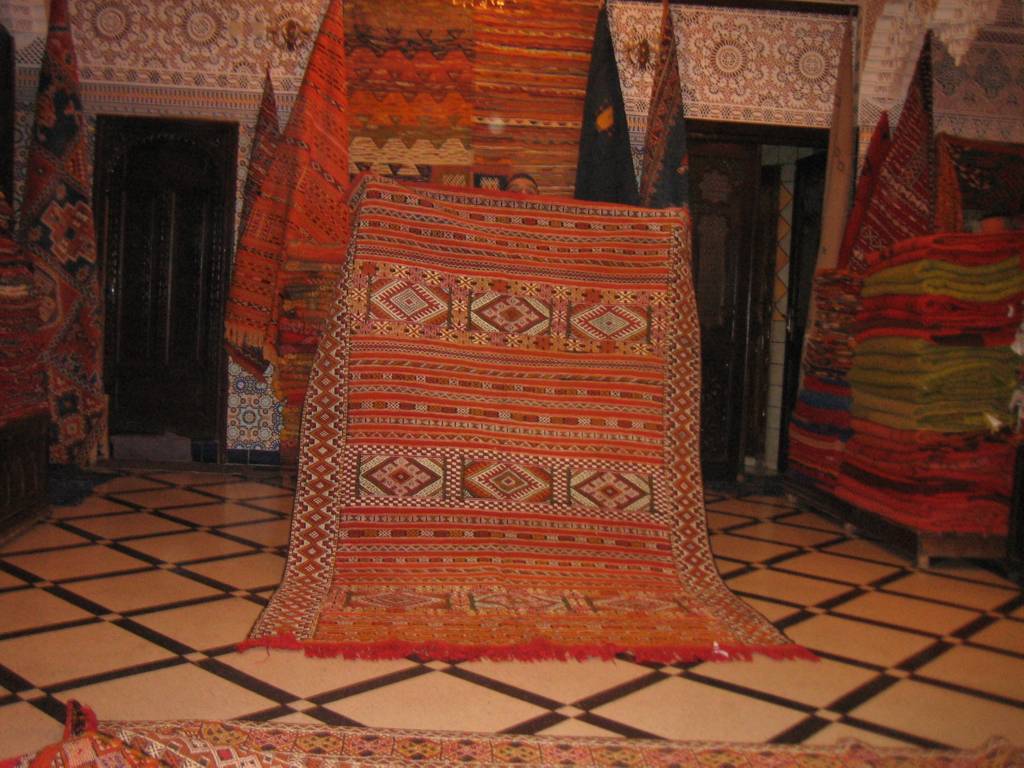
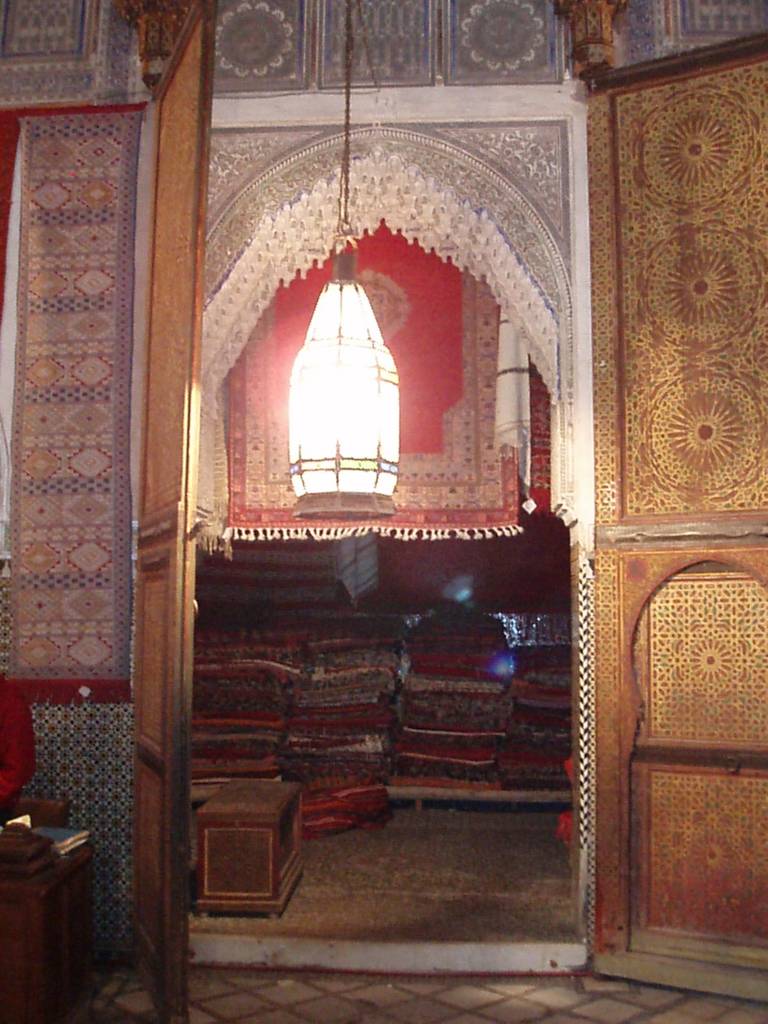
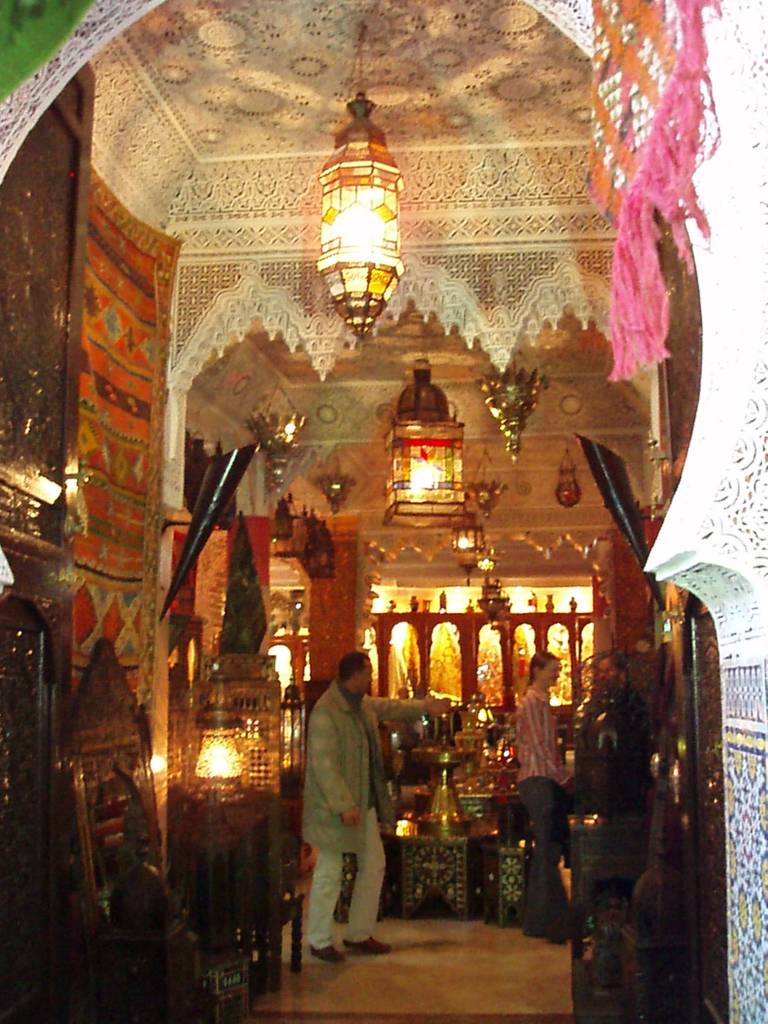

At some point we find our way out of the tangle of alleys back to Lahdim Square and try to find our way to the large mosque in the middle of the medina. We hurry as the sun is about to set and we don’t want to be in the dark in the narrow and dark labyrinth of the medina.
We find the mosque, but like all the other houses it is intertwined with the medina, so from the outside you can’t see more than the minaret; We are not allowed to enter the mosque as non-Muslims either.

Opposite the expansive church we see a small palace and according to a sign entry is even free. We allow ourselves to be lured into the building, and lo and behold, behind the heavy door there really is a palace: a high, beautifully decorated Arabic room, lined with carpets. The associated carpet dealer greets us and, after noticing our highly suspicious looks, tries to calm us down. We don’t need to look at carpets, of course.
He shows us around and explains that this was the property of a famous Koran teacher in the time of the well-known Sultan Moulay Ismail.
But we also leave this shop again without a carpet. The increasing darkness and hunger drive us back out to Lahdim Square.
The sun sets very quickly, and it’s only 6:30 p.m. We have another tea in the square, where more and more shows are taking place, and find an offer for dinner for 3€.
The restaurant is a small shop and there is nobody in it apart from us. We order our first tagine, a stew made with vegetables, chickpeas and your choice of meat, prepared and served in a cone-shaped clay pot. Along with couscous and brochettes, the tagine is the national dish of Morocco. The old man behind the counter gestures and talks to us, although we don’t understand a word. We still have our fun.
Sated and tired, we headed back to the hotel. Our further journey will lead us to the royal city of Fés al Bahli.

